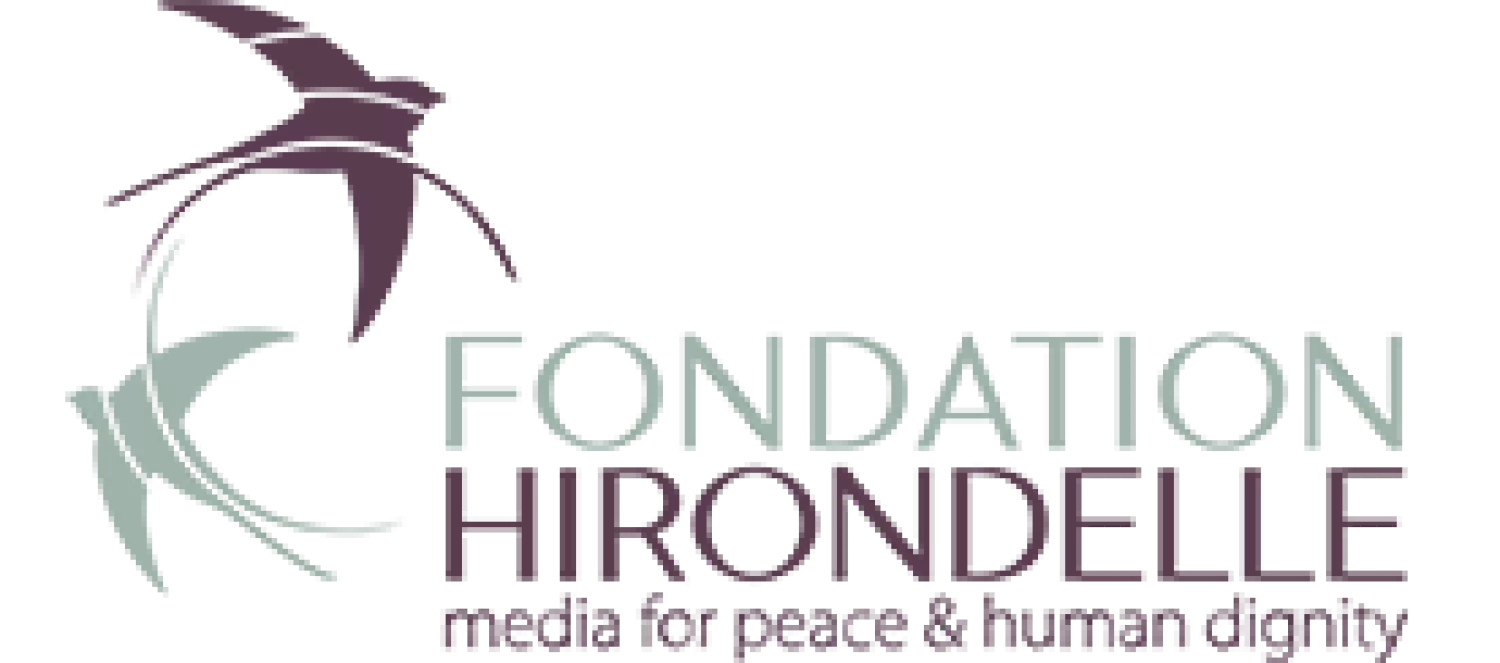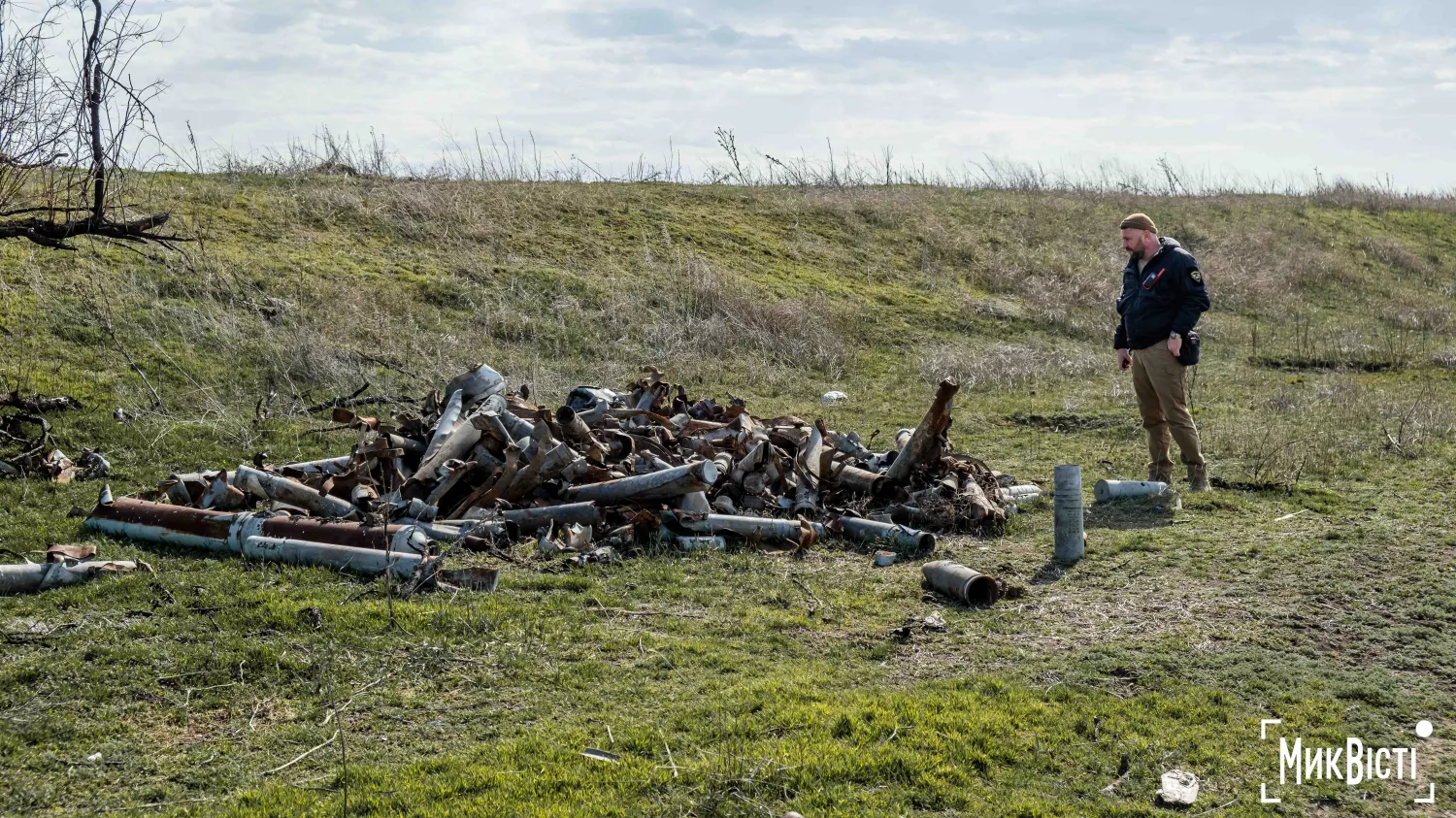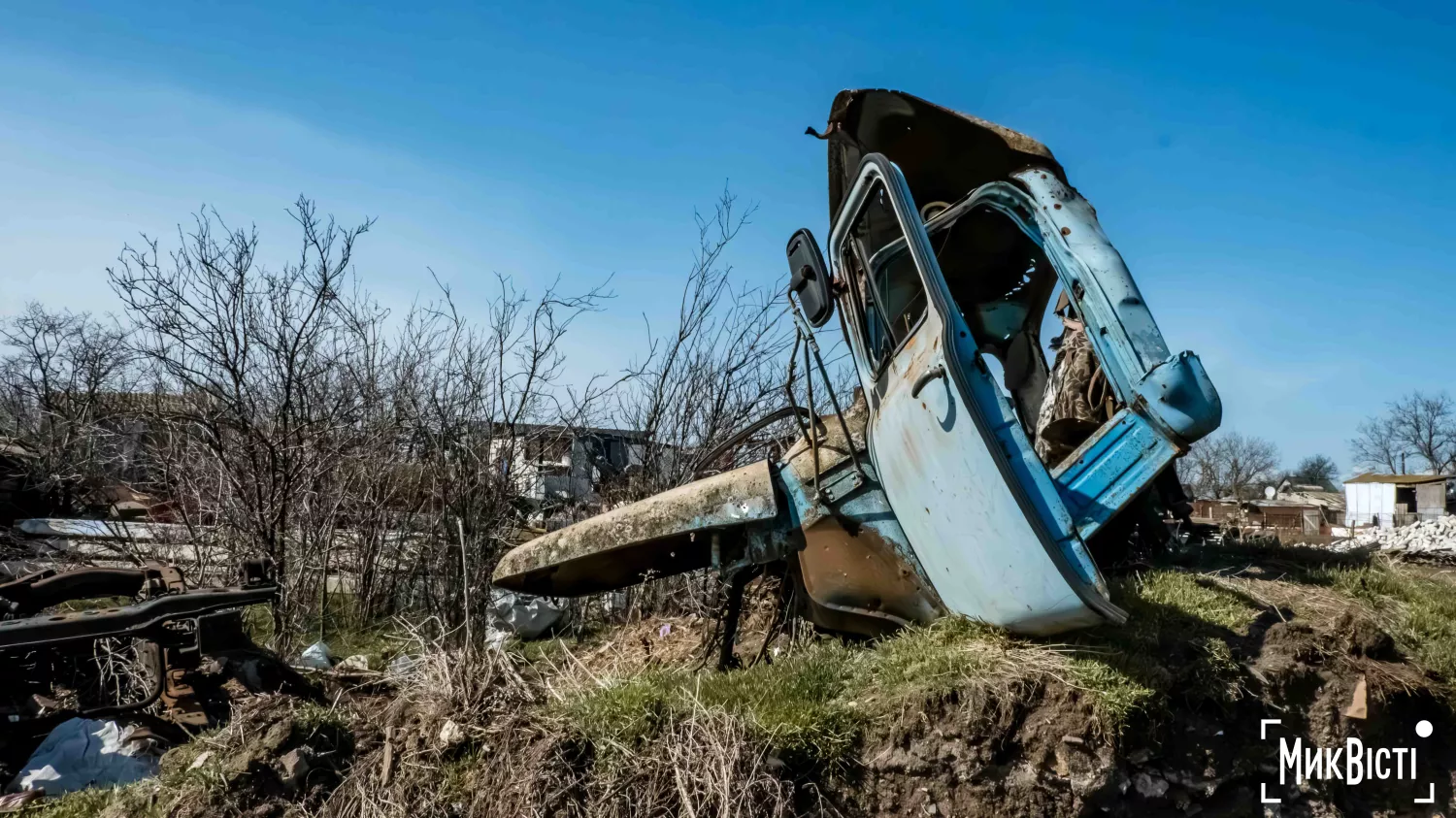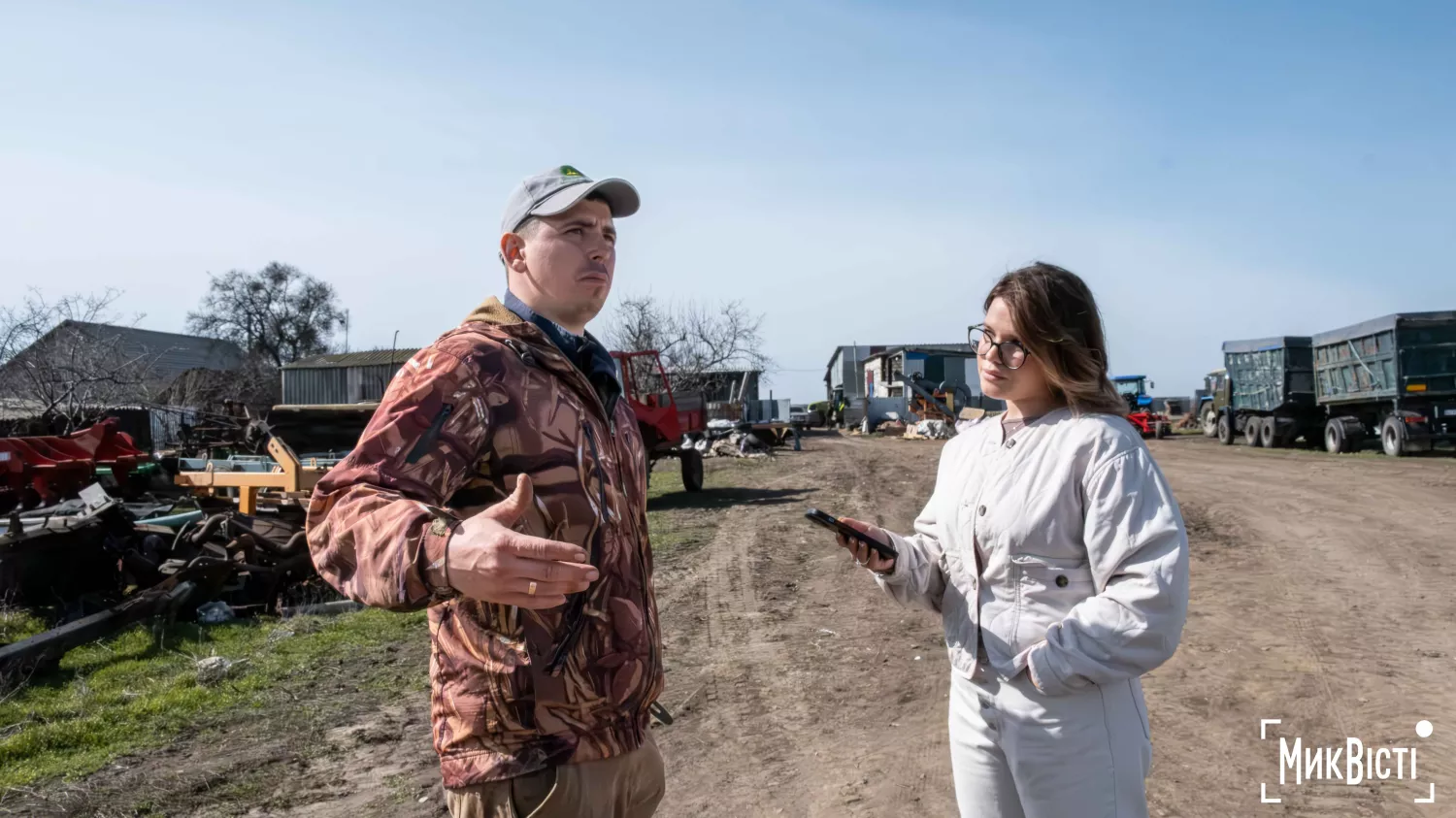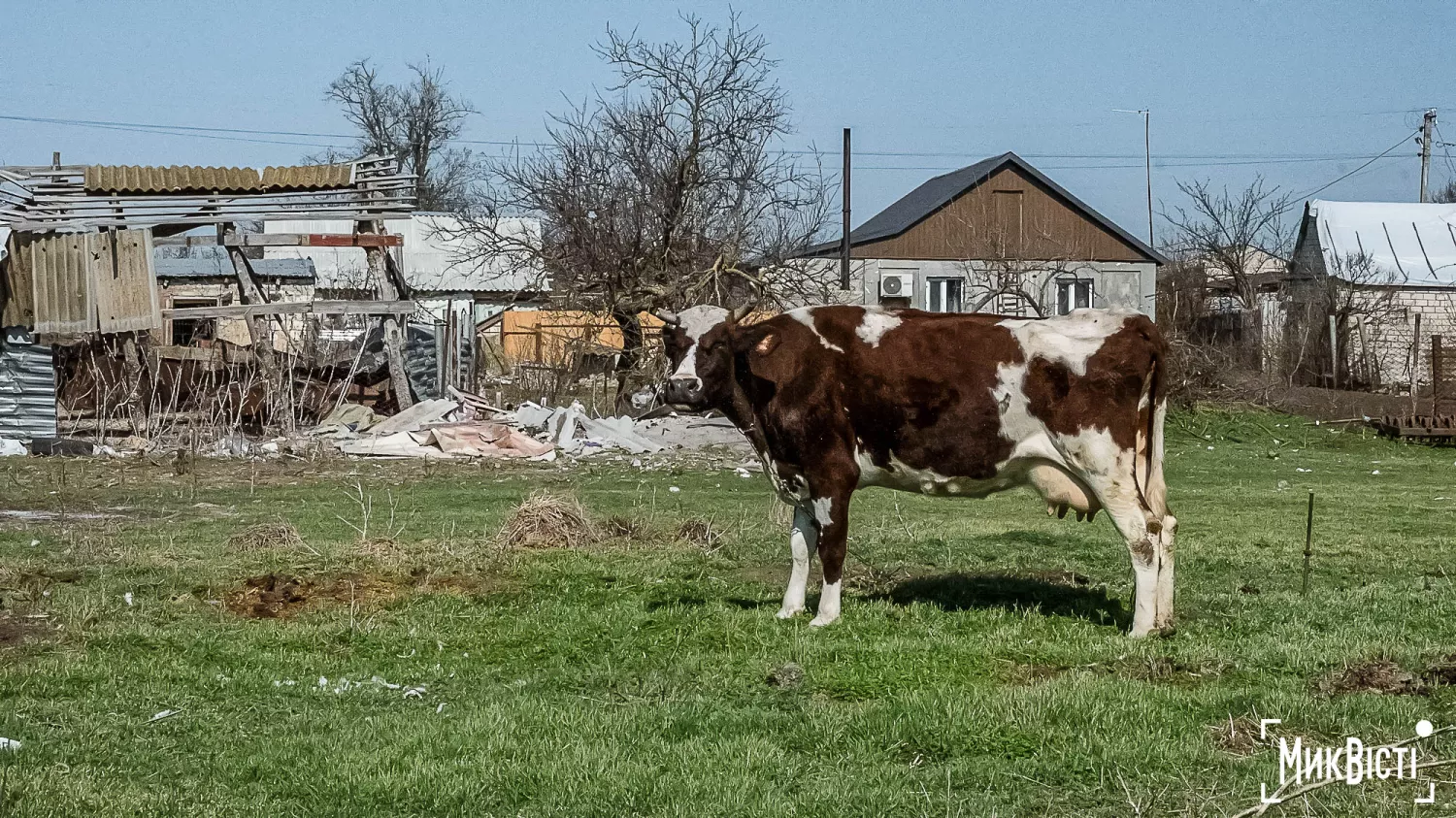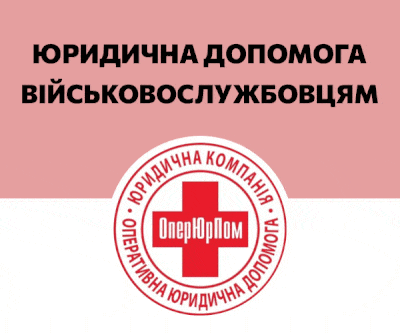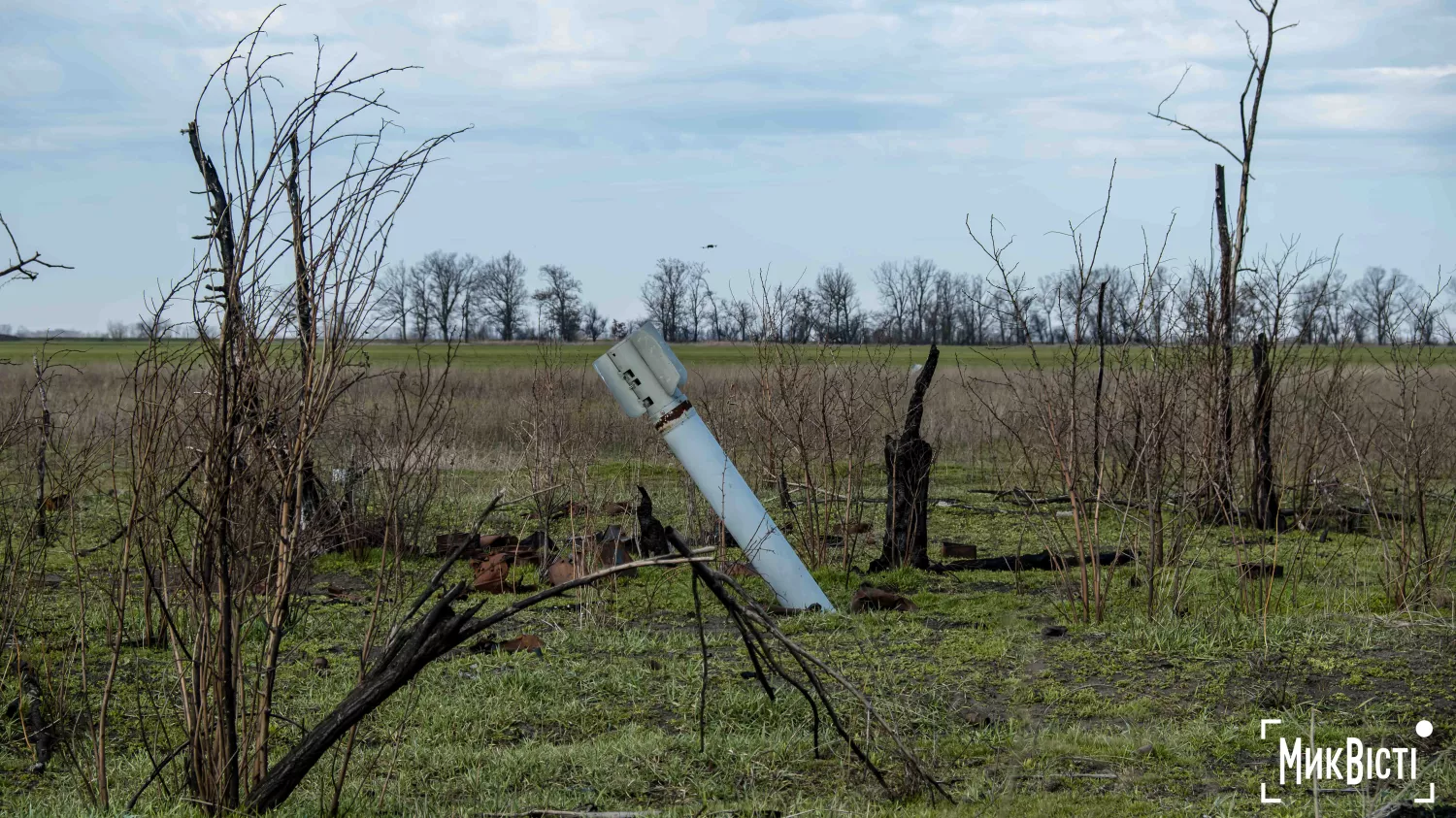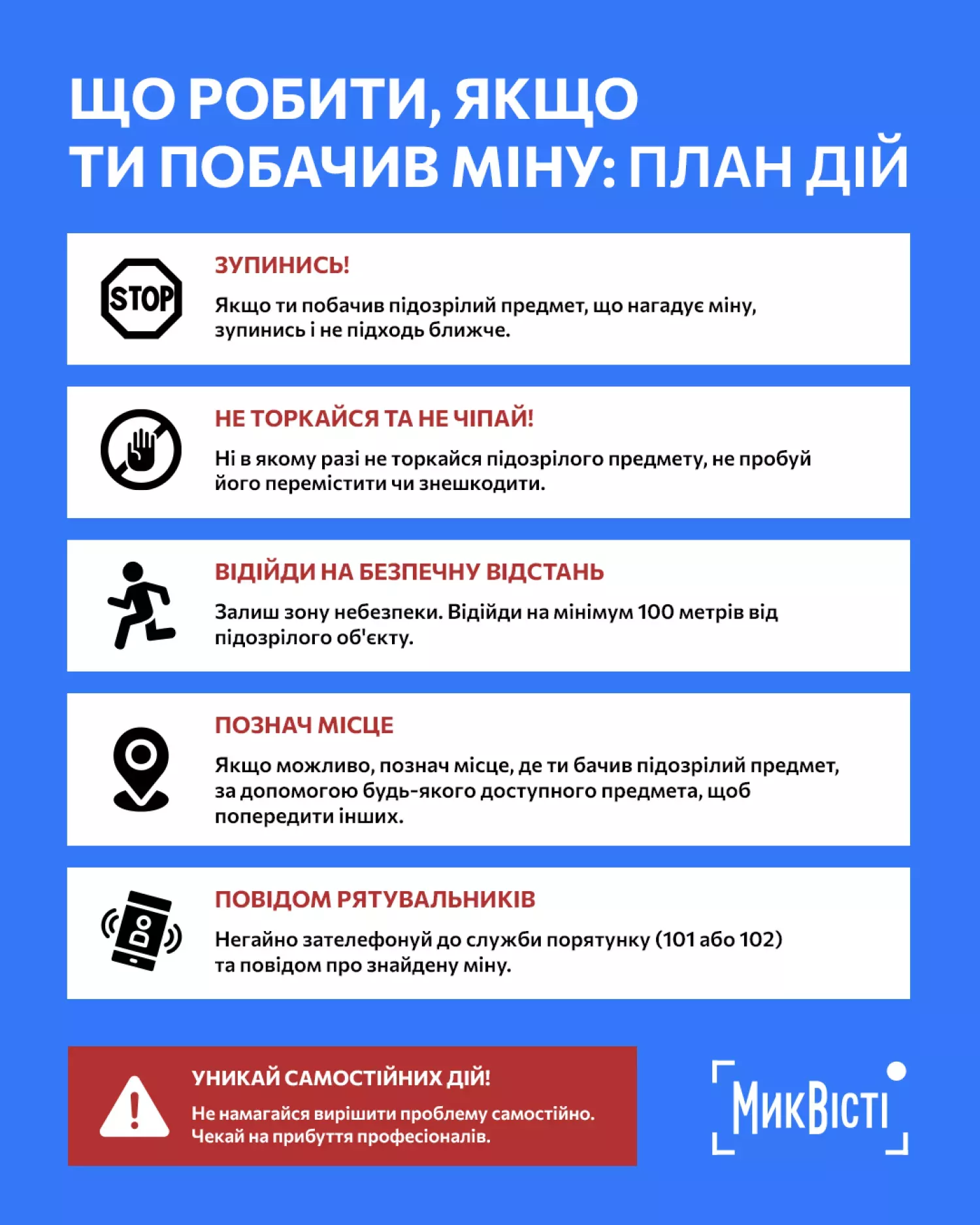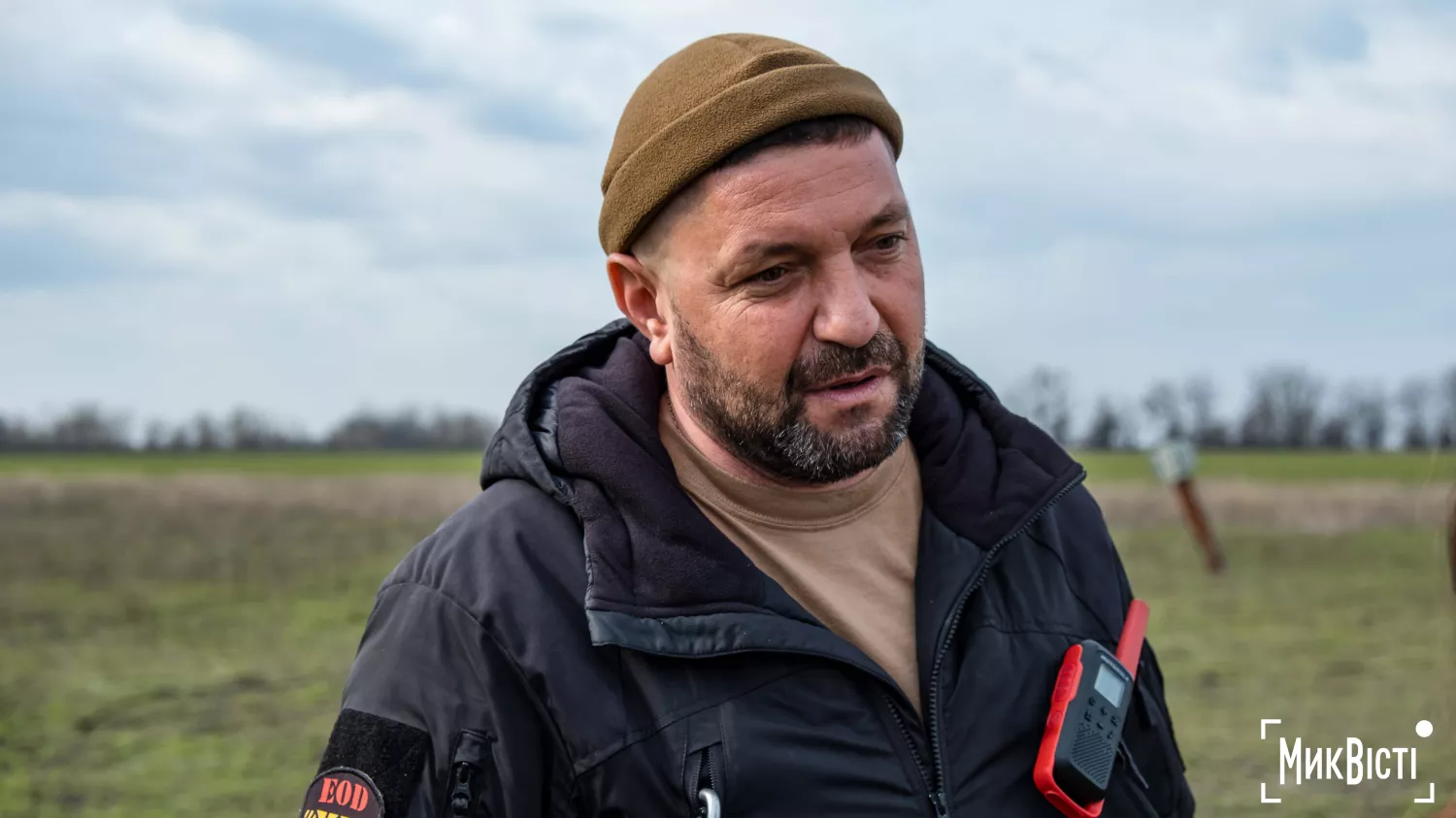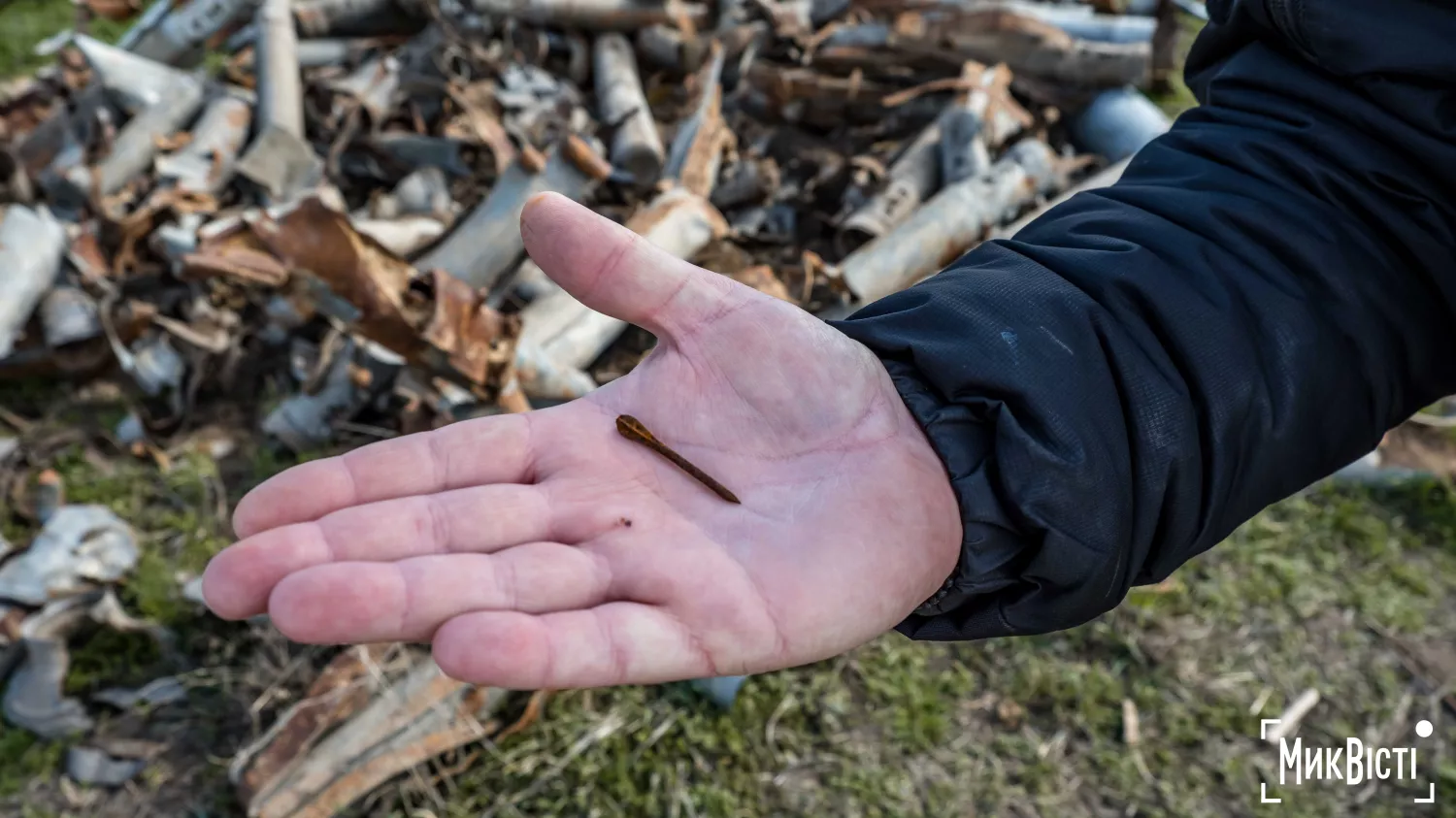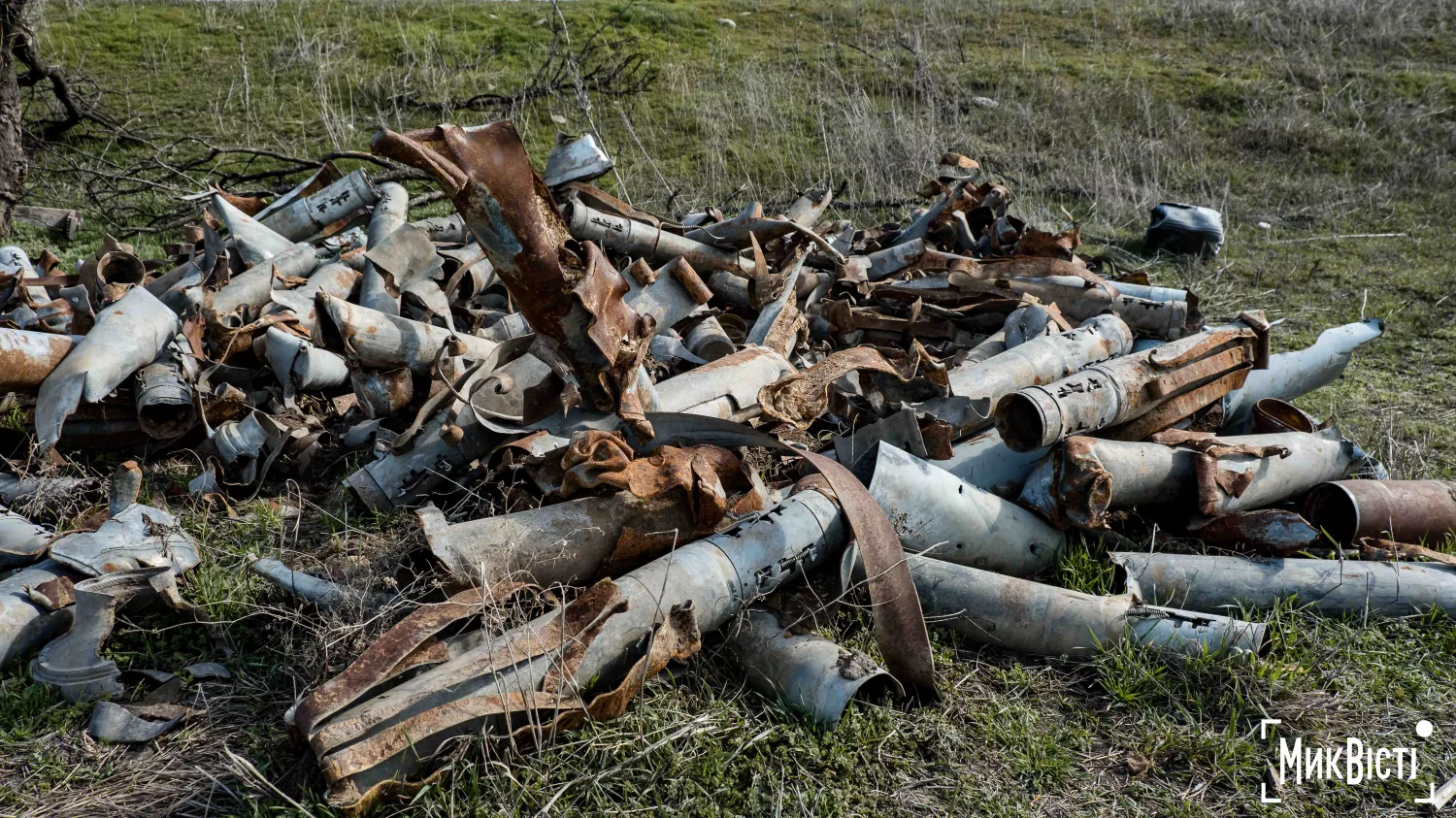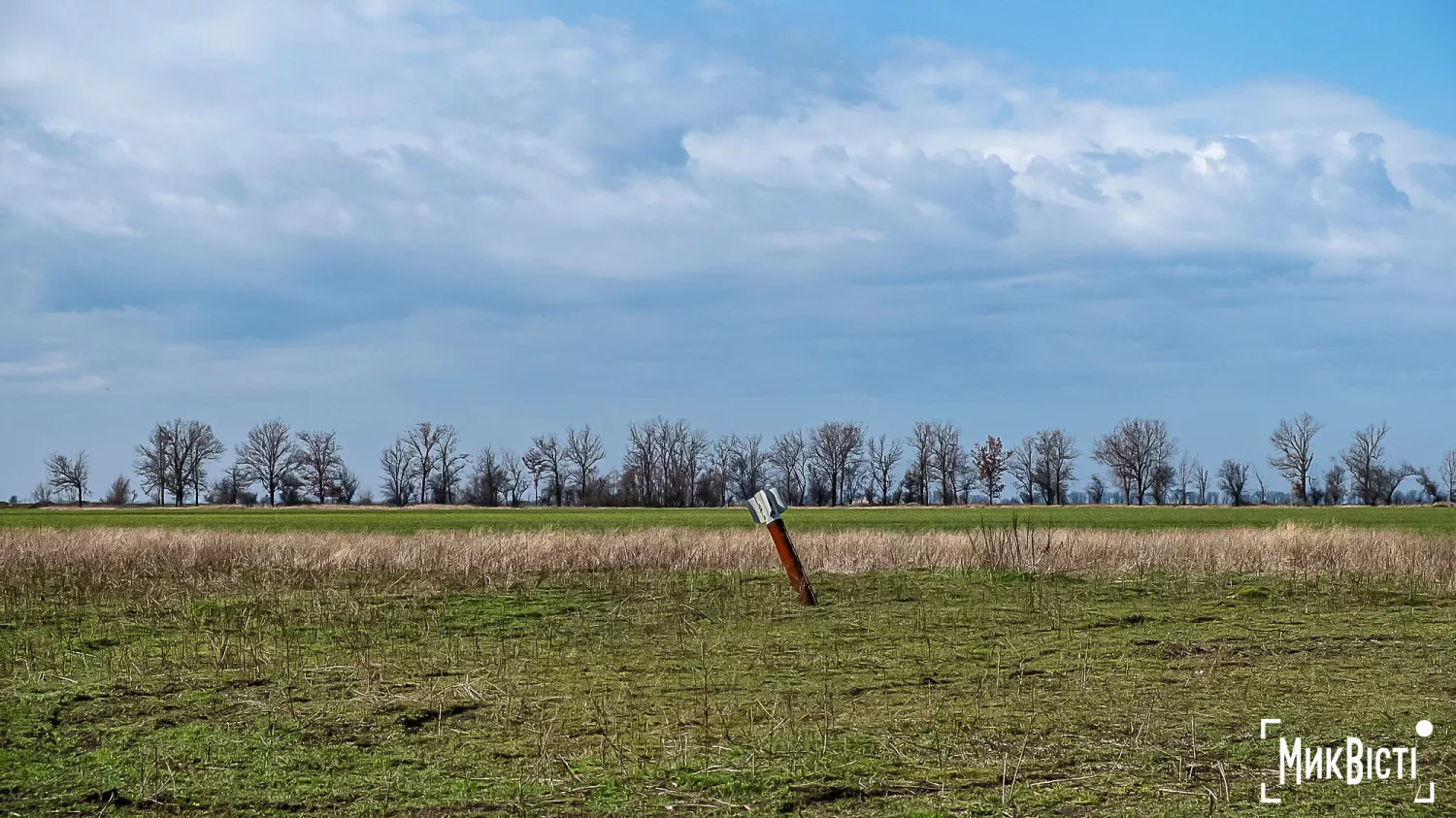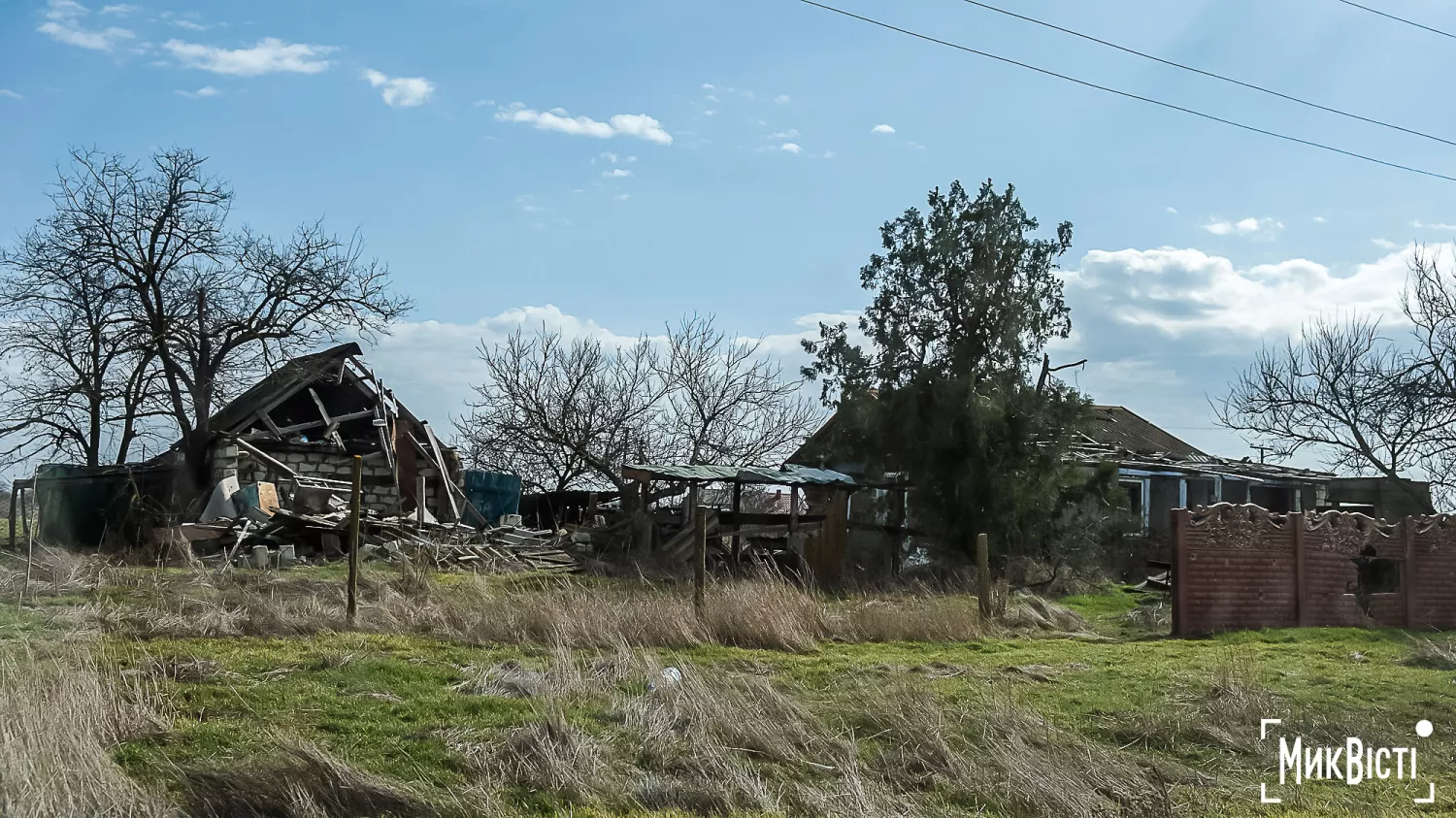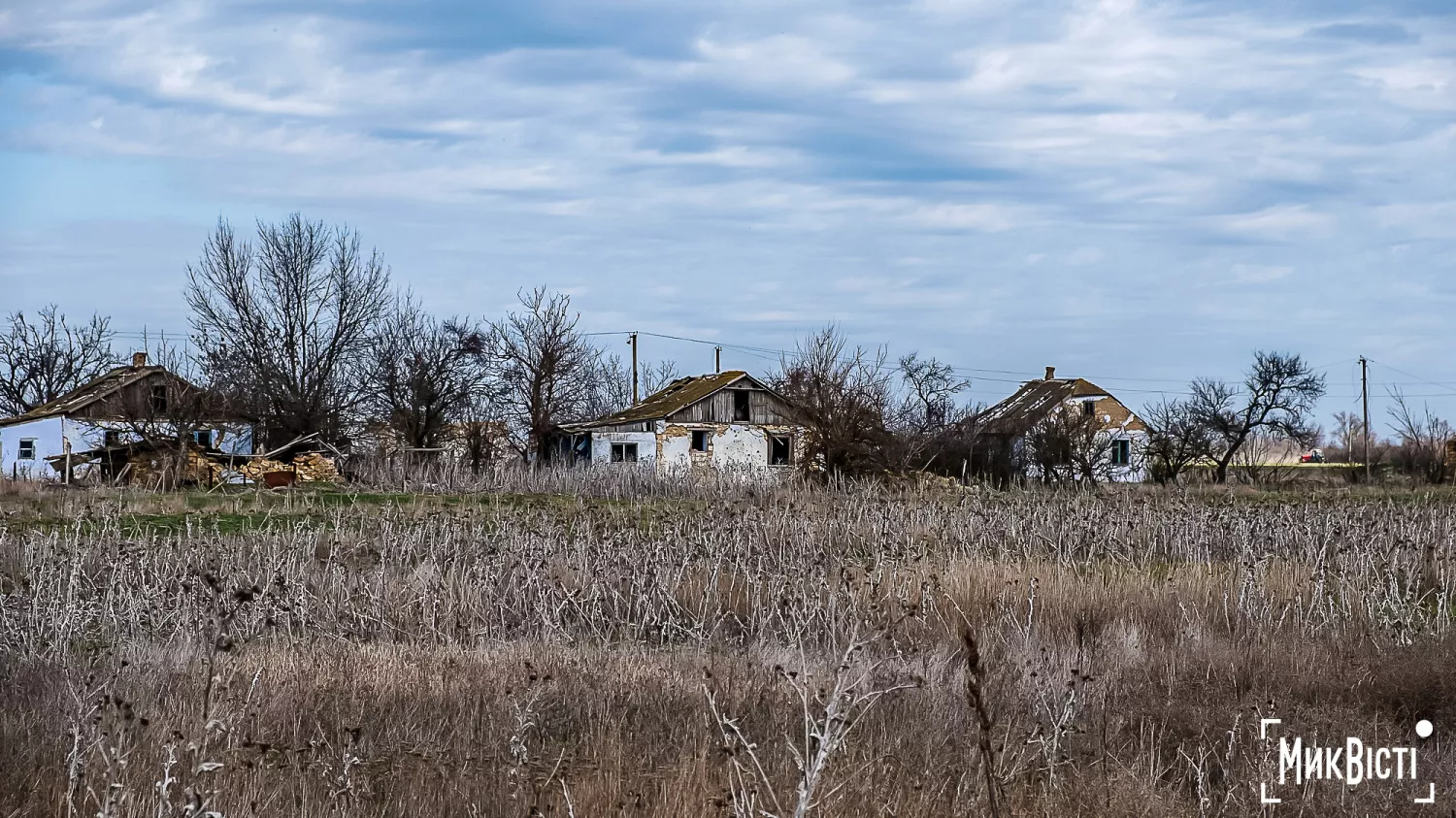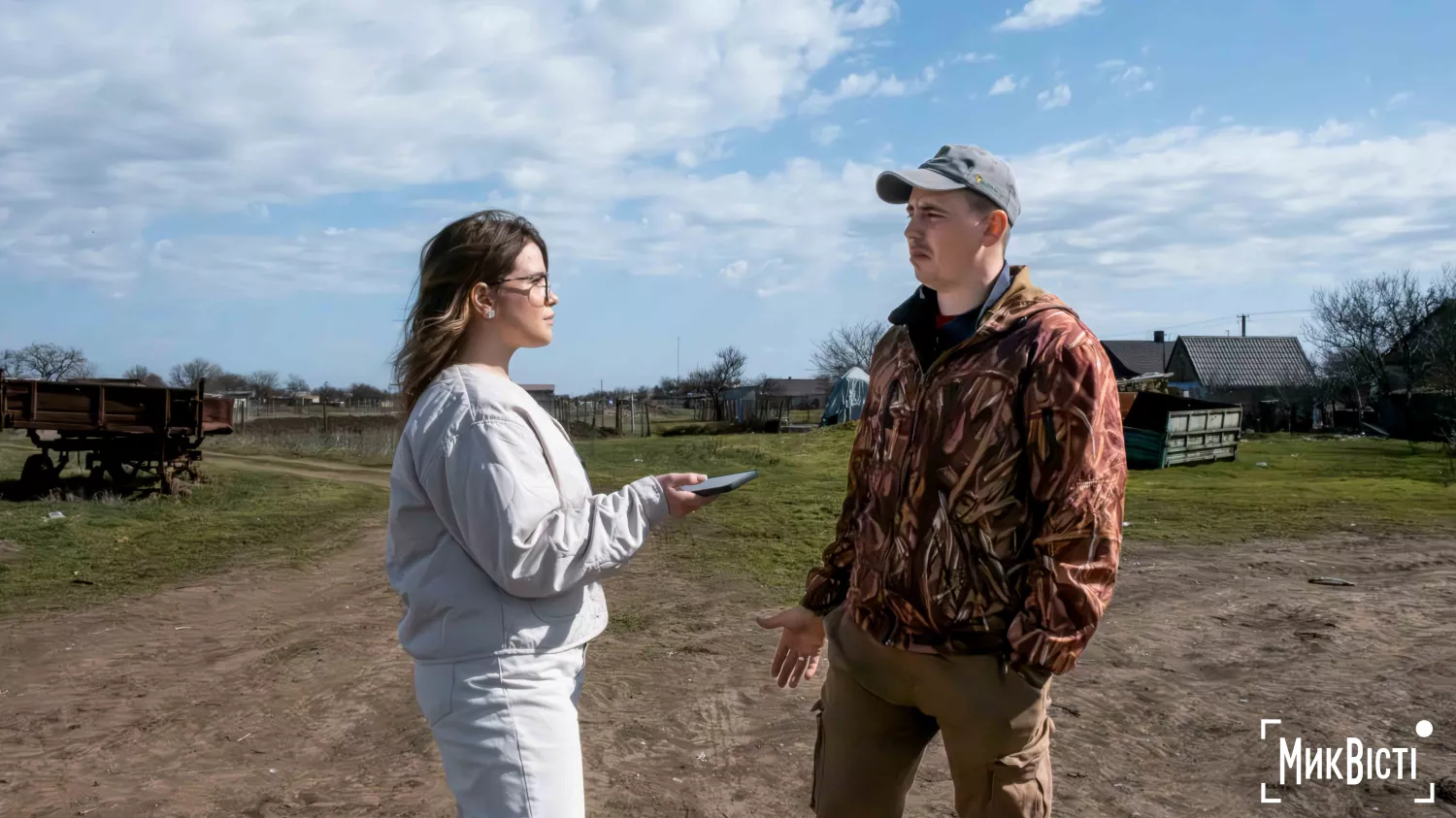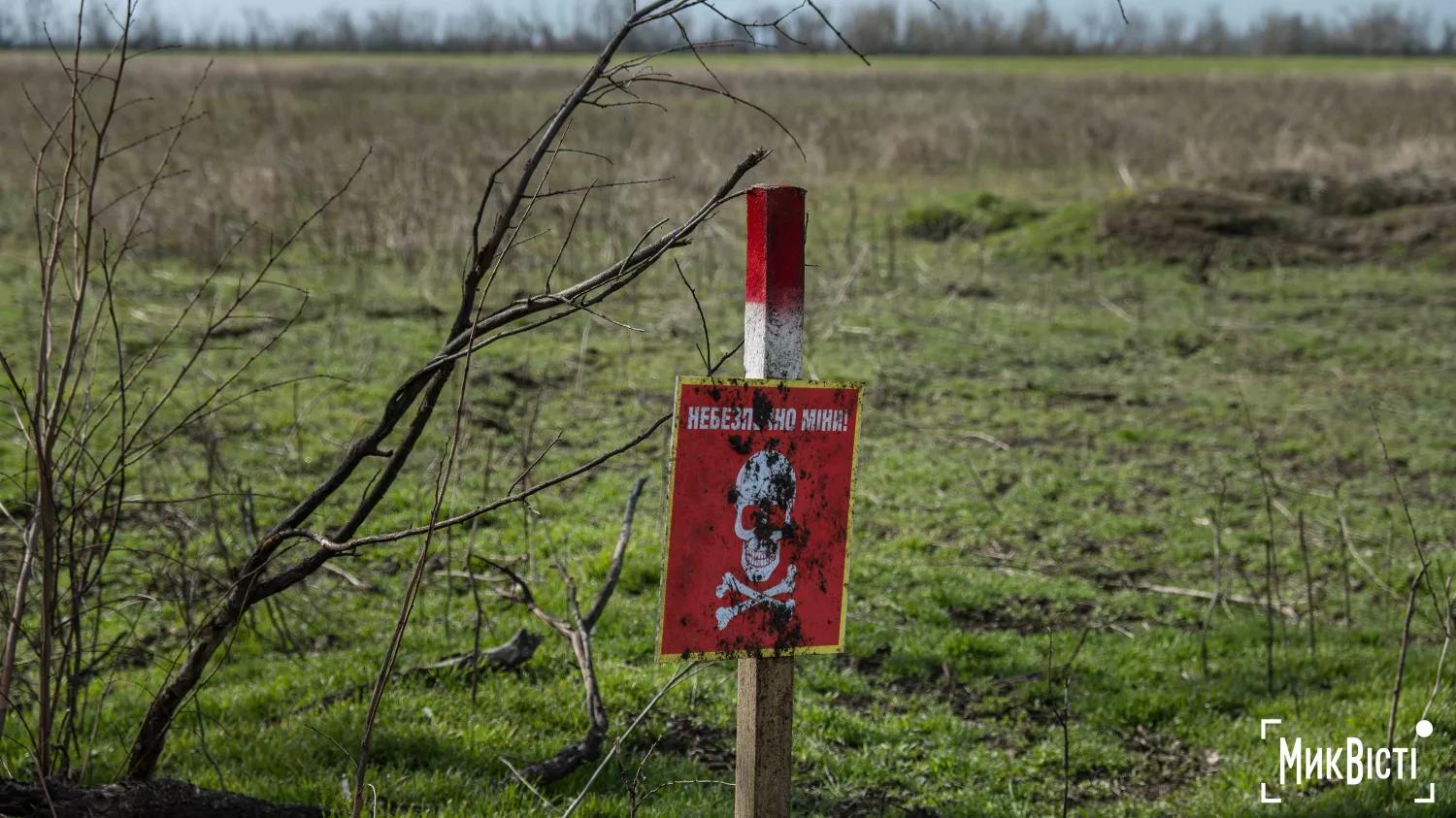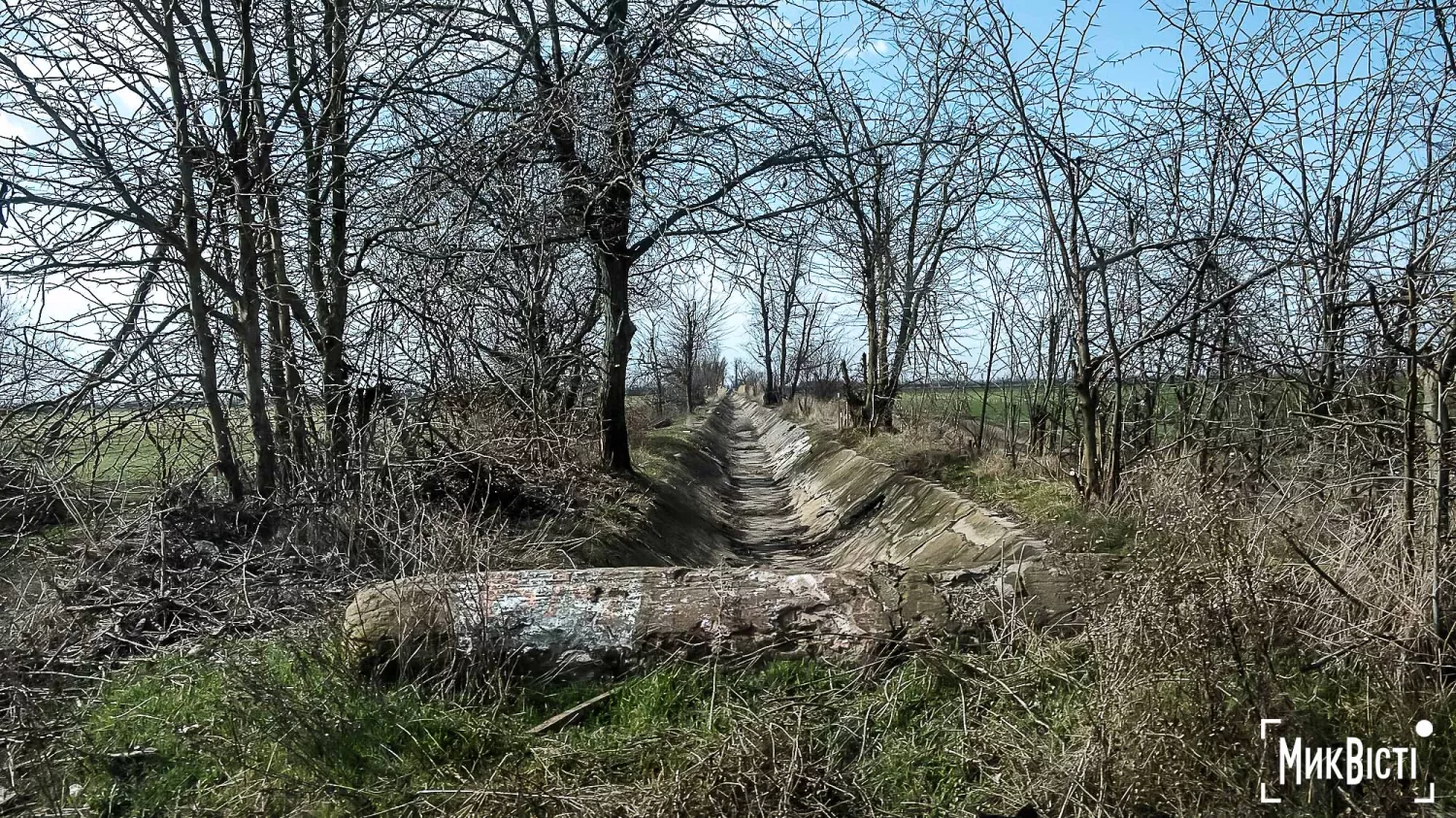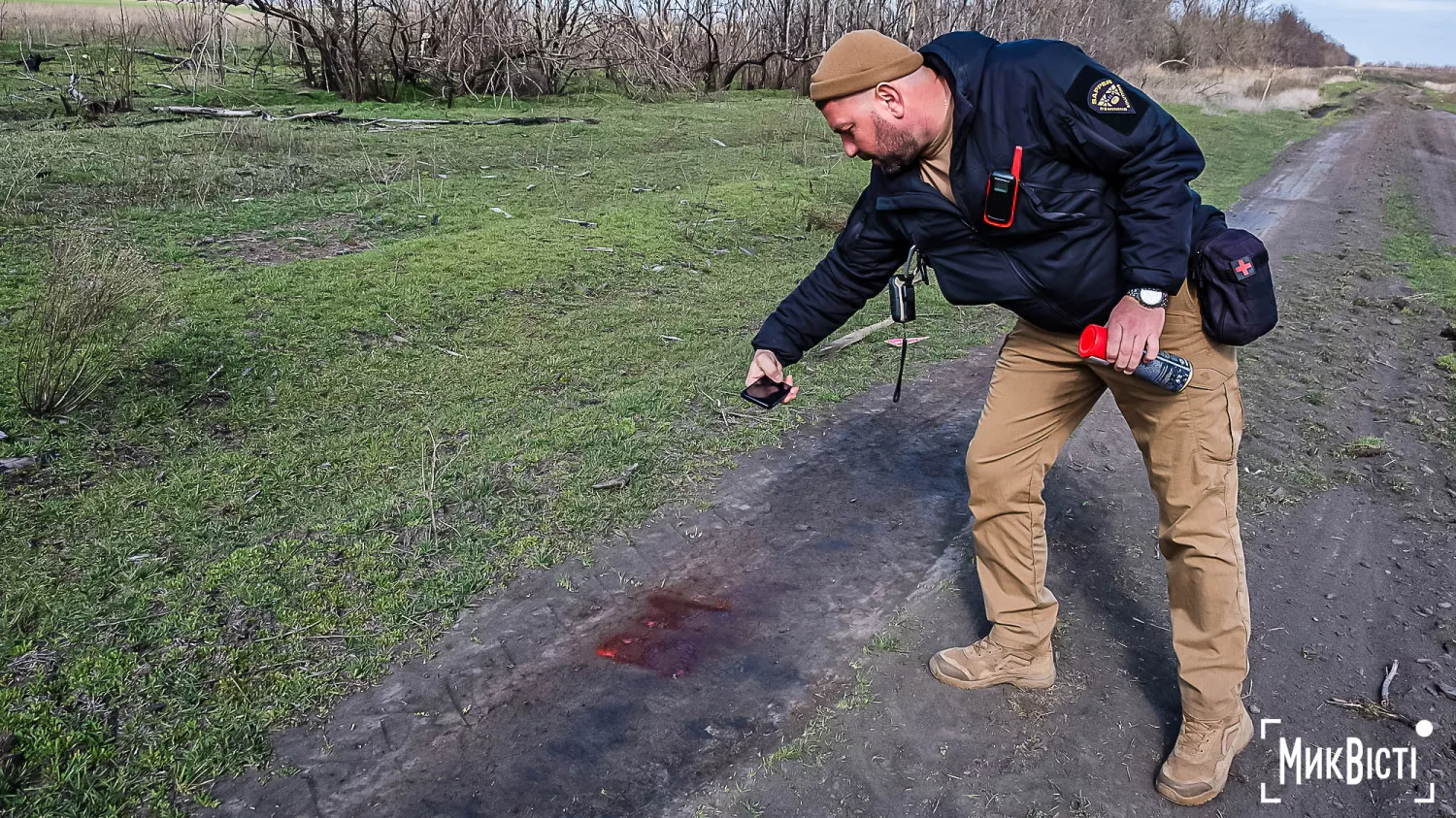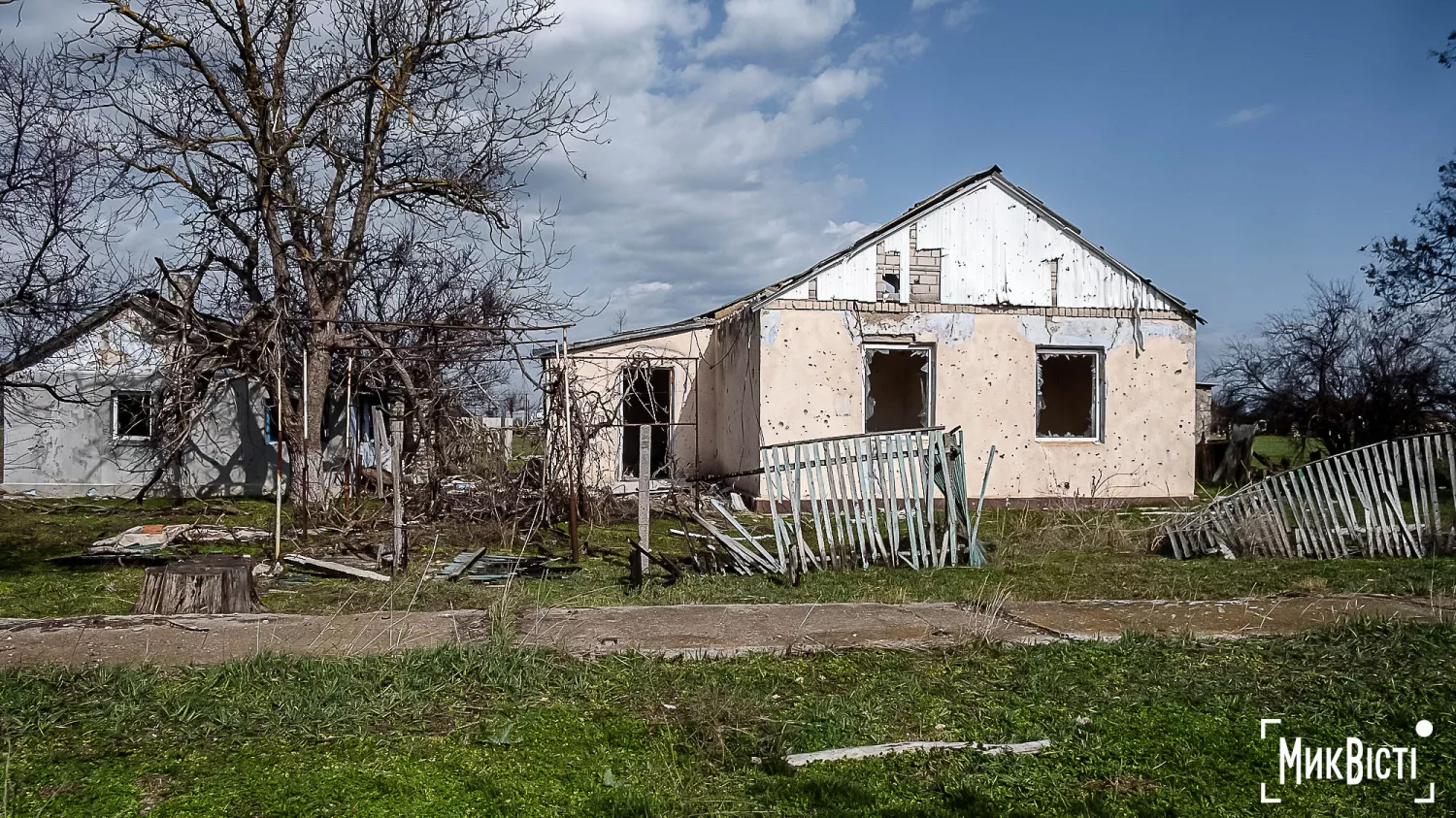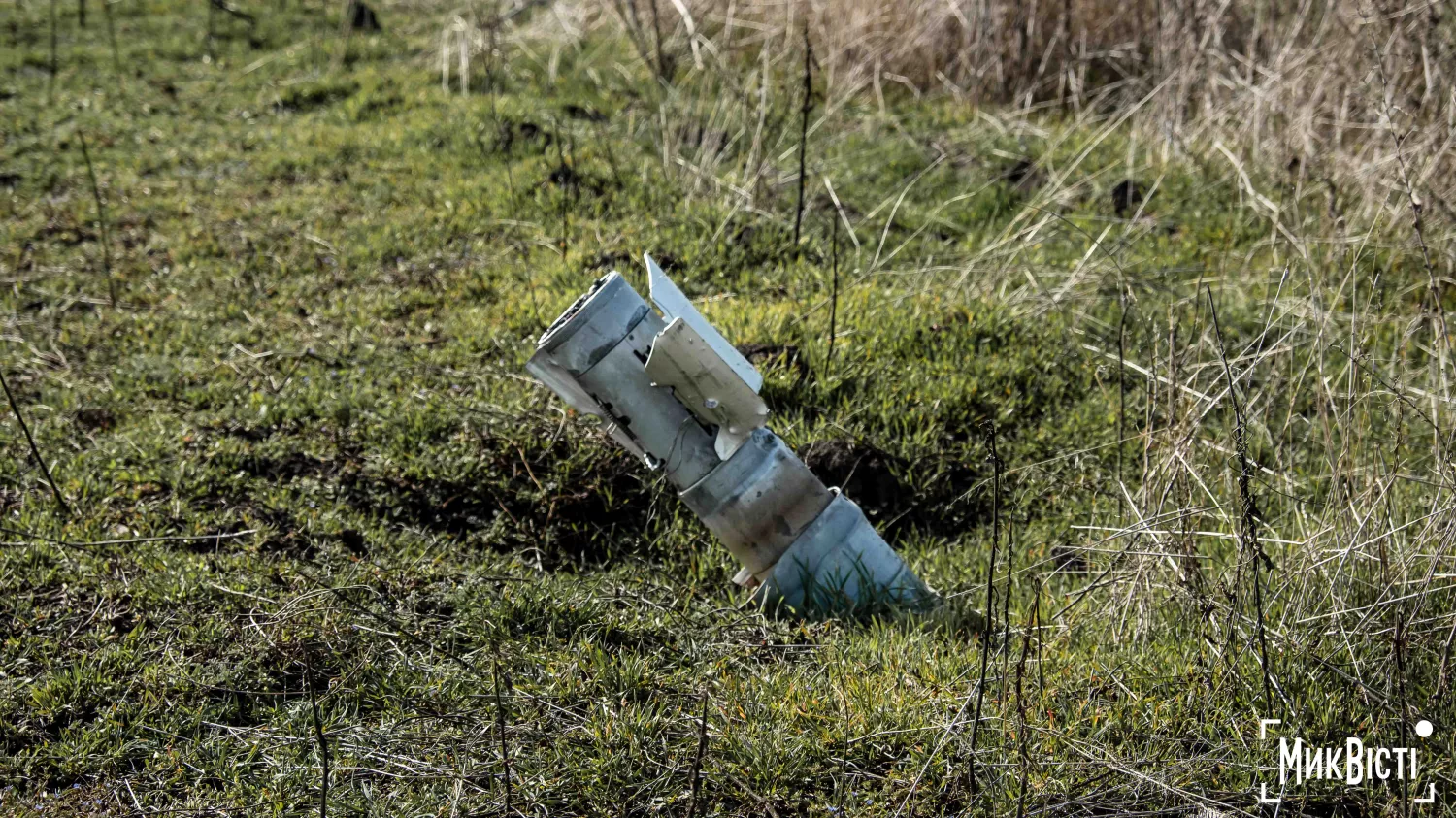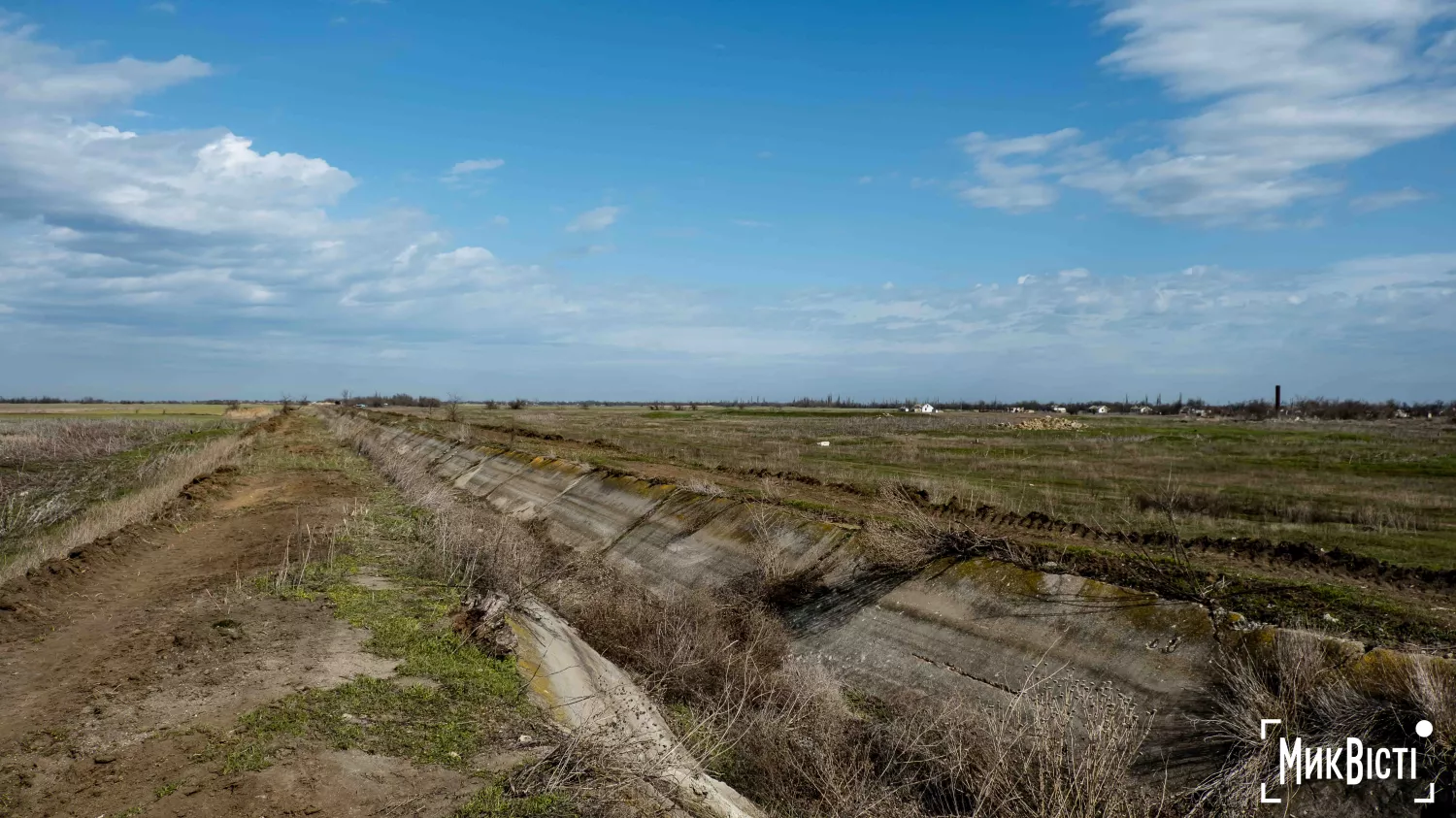Before setting foot on the ground: How deminers are preparing Mykolaiv region for the return of its people
- News of Mykolaiv
-
•
-

- Alina Kvitko
-
•
-
11:42, 26 March, 2025
In Ternovi Pody, an hour's drive from Mykolaiv, like many other villages in southern Ukraine, the war has left its mark not only in the destroyed houses but also in the ground. After eight months of occupation and fierce fighting, the area is literally littered with danger: mines, unexploded ordnance, and ammunition that could detonate at any moment.
However, people are slowly returning home. A year ago, only five people lived here, and now there are eight. Does this mean that the village is safe? This is a question that cannot be answered without a thorough analysis. And before starting the reconstruction, experts conduct a non-technical inspection (NTI) to collect information, map potentially dangerous areas and determine the extent of threats.
Journalists from NikVesti visited Ternovi Pody and talked to specialists from Demining Solutions, which conducts NTI in cooperation with UNDP and with funding from the Japanese government. They told us how the area is being surveyed, what risks the war has left behind, and what needs to happen for people to return here without fear.
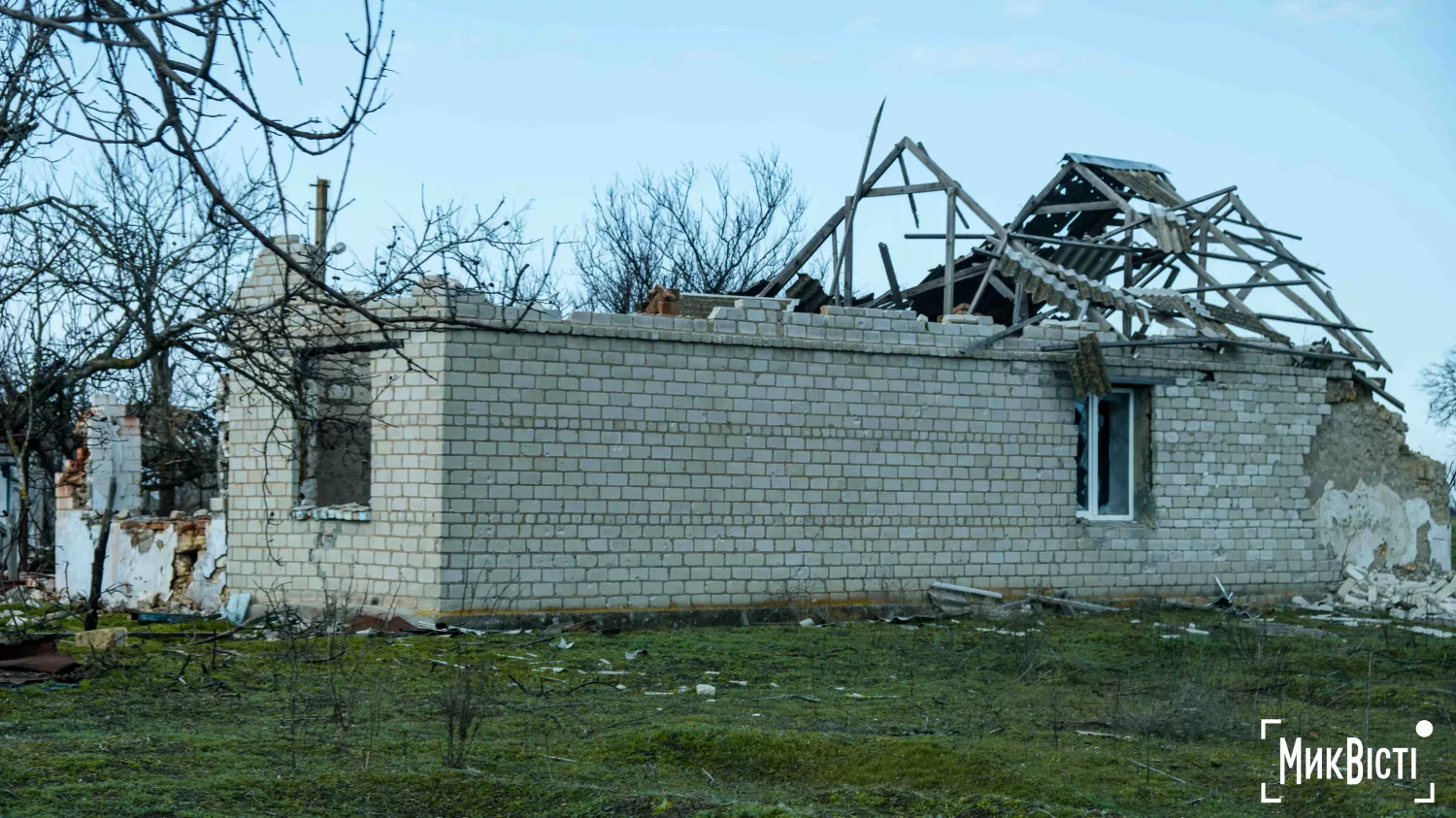 This is what the village of Ternovi Pody looks like — it was liberated from Russian troops 2 years ago. Photo: NikVesti
This is what the village of Ternovi Pody looks like — it was liberated from Russian troops 2 years ago. Photo: NikVesti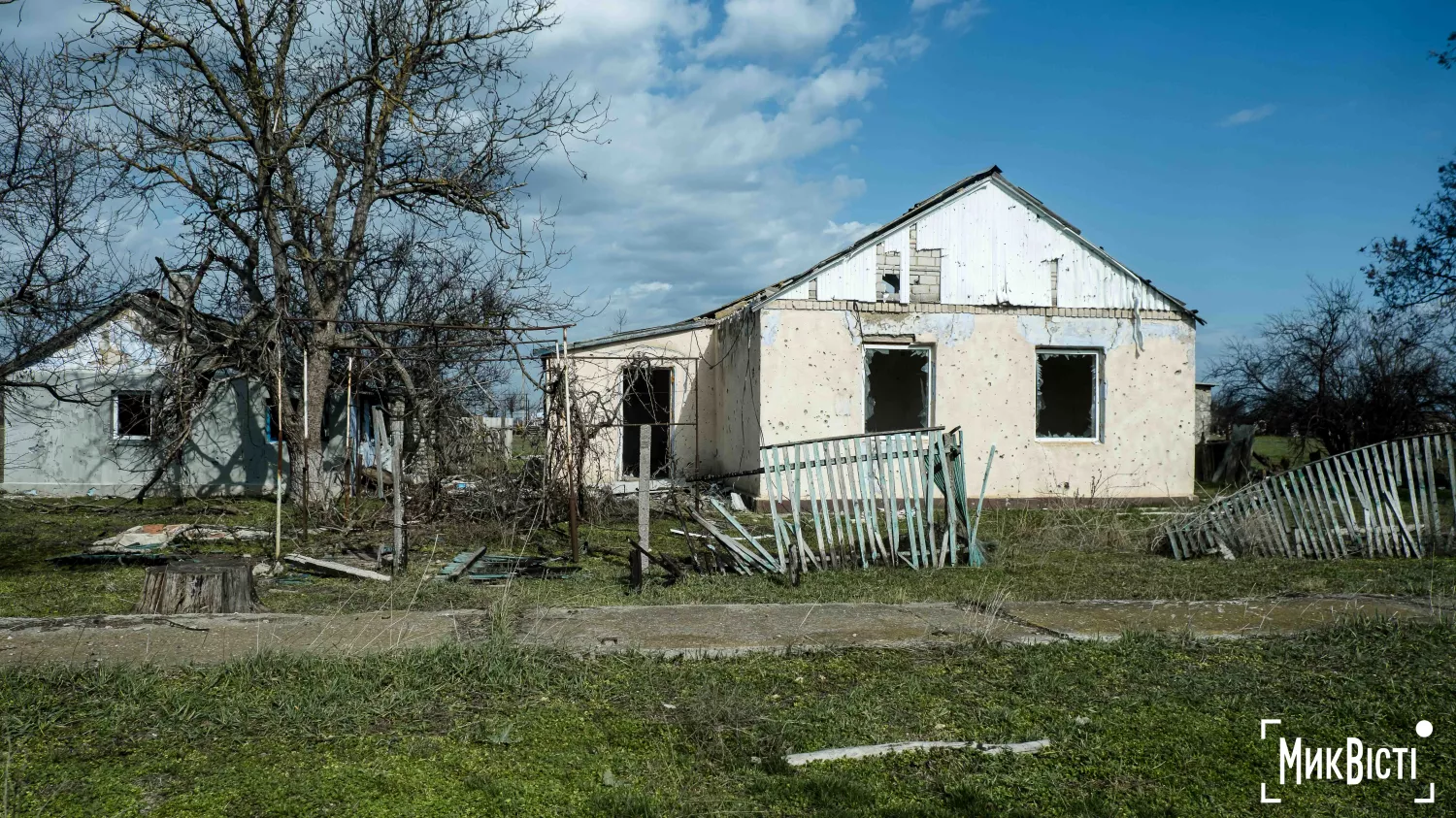 This is what the village of Ternovi Pody looks like — 2 years ago it was liberated from Russian troops. Photo: NikVesti
This is what the village of Ternovi Pody looks like — 2 years ago it was liberated from Russian troops. Photo: NikVestiLand after the explosions: how farmers are sowing on minefields again
Farmer Ivan Pyvovarchuk from the village of Liubomyrivka cultivates 1,100 hectares of land, 300 of which are located near Ternovi Pody in Mykolaiv region. His fields, like many others in southern Ukraine, have become contaminated by mines and shell remnants from Russian aggression.
At the outbreak of the war, Ivan and his family were forced to leave the village, and upon their return, they began the arduous task of rebuilding their farm, which was accompanied by constant mine threats. Ivan and his family were not just waiting for help, they were actively engaged in de-mining their fields.
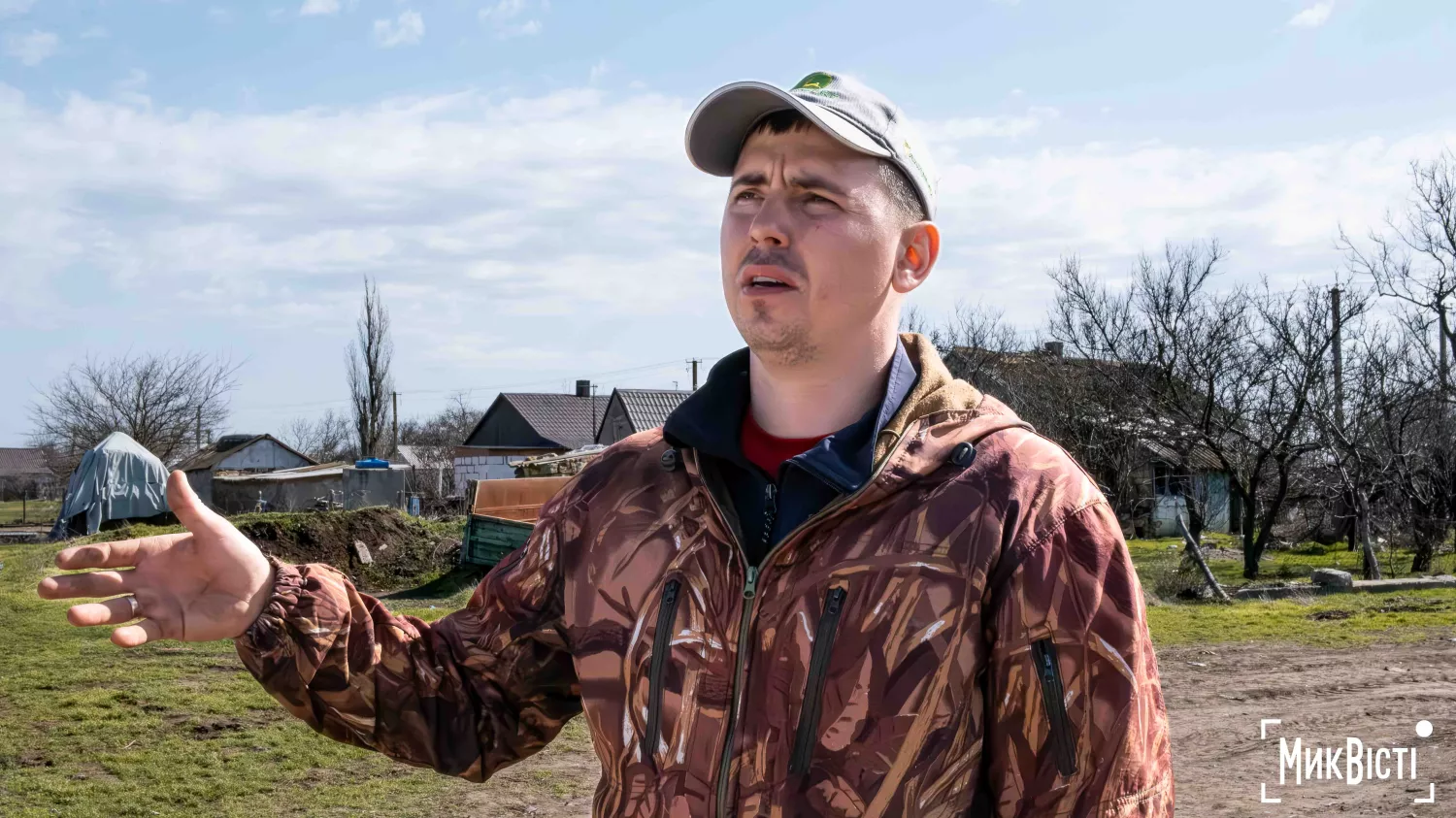 Farmer Ivan Pyvovarchuk explains how he cleared 1,100 hectares of land of mines in two years on his own. Photo: NikVesti
Farmer Ivan Pyvovarchuk explains how he cleared 1,100 hectares of land of mines in two years on his own. Photo: NikVesti«We found a lot of cluster munitions, as well as shells from «Grad», «Uragan». When we found them, we either took them out of the village ourselves or called special units of the State Emergency Service to defuse them. Such work is always dangerous,» he says.
Tank mines proved to be particularly dangerous, and Ivan recalls the incident when his ZIL tractor hit a mine in February 2023.
«In February 2023, our ZIL tractor hit a mine, and only the body was left. Fortunately, everyone survived, even if they lost their equipment,» says the farmer.
It should be noted that as the sowing campaign approaches, farmers in Kherson and Mykolaiv regions are increasingly taking risks and inspecting their land on their own, which often ends tragically. During the full-scale war, according to the Ministry of Internal Affairs, 610 people in Ukraine were injured by mines and another 277 were killed. Among those killed by mines were 14 children. Most of the victims are in Mykolaiv, Kherson and Kharkiv regions.
In addition, according to the Ministry of Economy of Ukraine, together with the Kyiv School of Economics, the number of victims of explosive ordnance in Ukraine may increase to 9,000 in the next 10 years.
In two years, they managed to clear all 1,100 hectares of land. Ivan notes that it is the military who work most effectively: «These are the guys who come and clear 30 hectares in two weeks. Then you can go back and work. It's a serious job, they do everything quickly and efficiently».
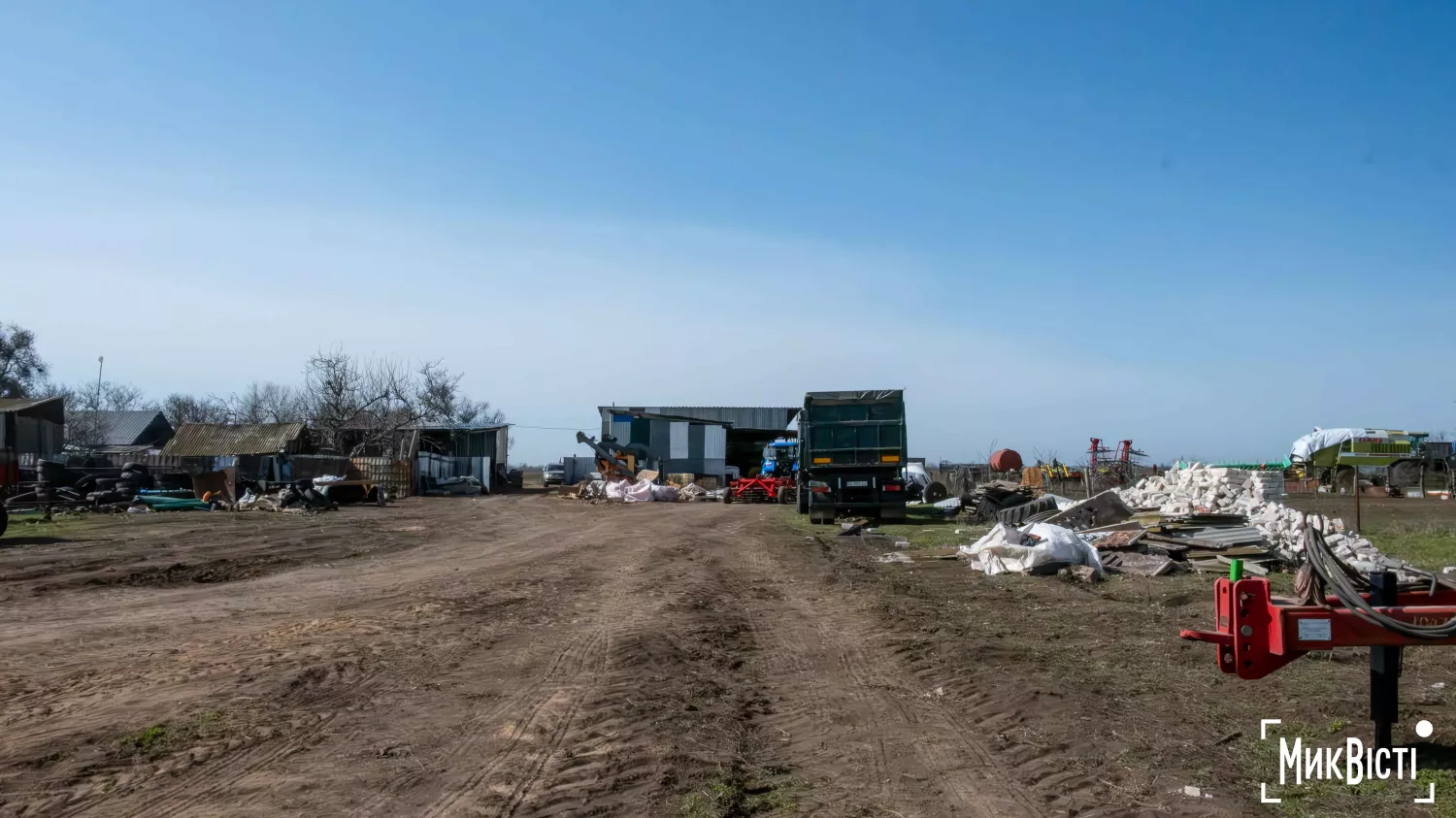 A farmer claims that it is not foreign companies that do the best job of clearing the fields, but the Ukrainian military. Photo: NikVesti
A farmer claims that it is not foreign companies that do the best job of clearing the fields, but the Ukrainian military. Photo: NikVestiAccording to him, foreign deminers, such as the Norwegians, are far behind in their pace: «They spend years on 30 hectares, working only two hours a day, and this is not what is needed in such conditions».
However, the difficulties in restoring land tenure were not limited to mine threats. During the occupation, the Russians took all the equipment and looted the buildings. In addition, the farmer lost a significant part of his animals — more than 40 rams that were destroyed or taken by the occupiers are still unknown.
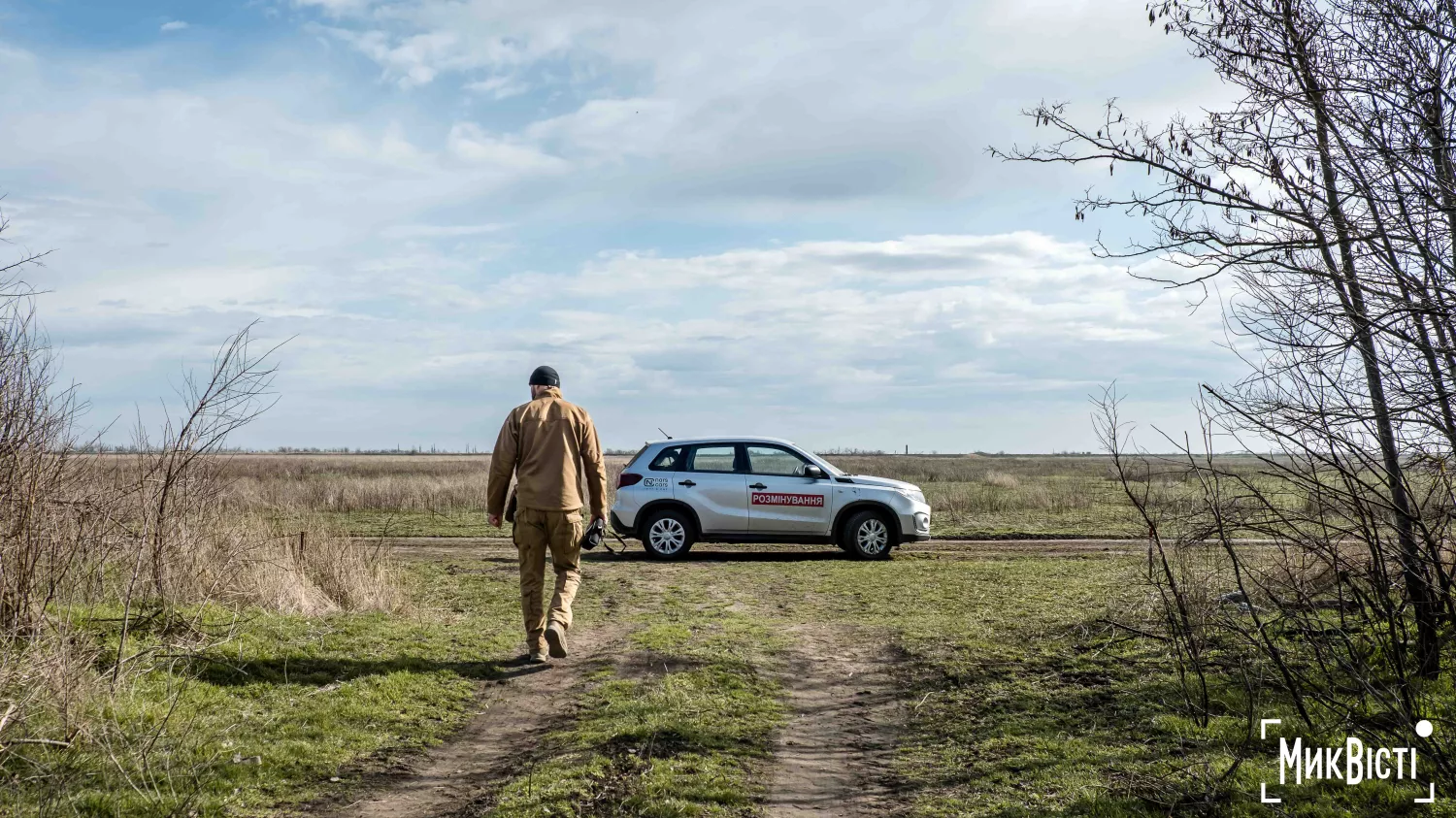 Demining Solutions specialists are conducting «reconnaissance» with a drone over the fields to find and record dangerous objects. Photo: NikVesti
Demining Solutions specialists are conducting «reconnaissance» with a drone over the fields to find and record dangerous objects. Photo: NikVestiHow to determine where the danger is hidden: what is a NTI?
Non-technical inspection (NTI) is one of the first stages of humanitarian demining. It is not a direct disposal of explosive ordnance, but rather work to identify and map potentially dangerous areas.
During the NTI, experts
• Analyse satellite images and maps of combat operations;
• communicate with local residents who may know about mines or shelling sites;
• check the territory for dangerous debris and explosive remnants of war;
• mark potentially contaminated areas and determine the level of threat.
This approach significantly reduces the risks for engineers, builders and residents. Without this stage, any work on the territory could lead to tragedies.
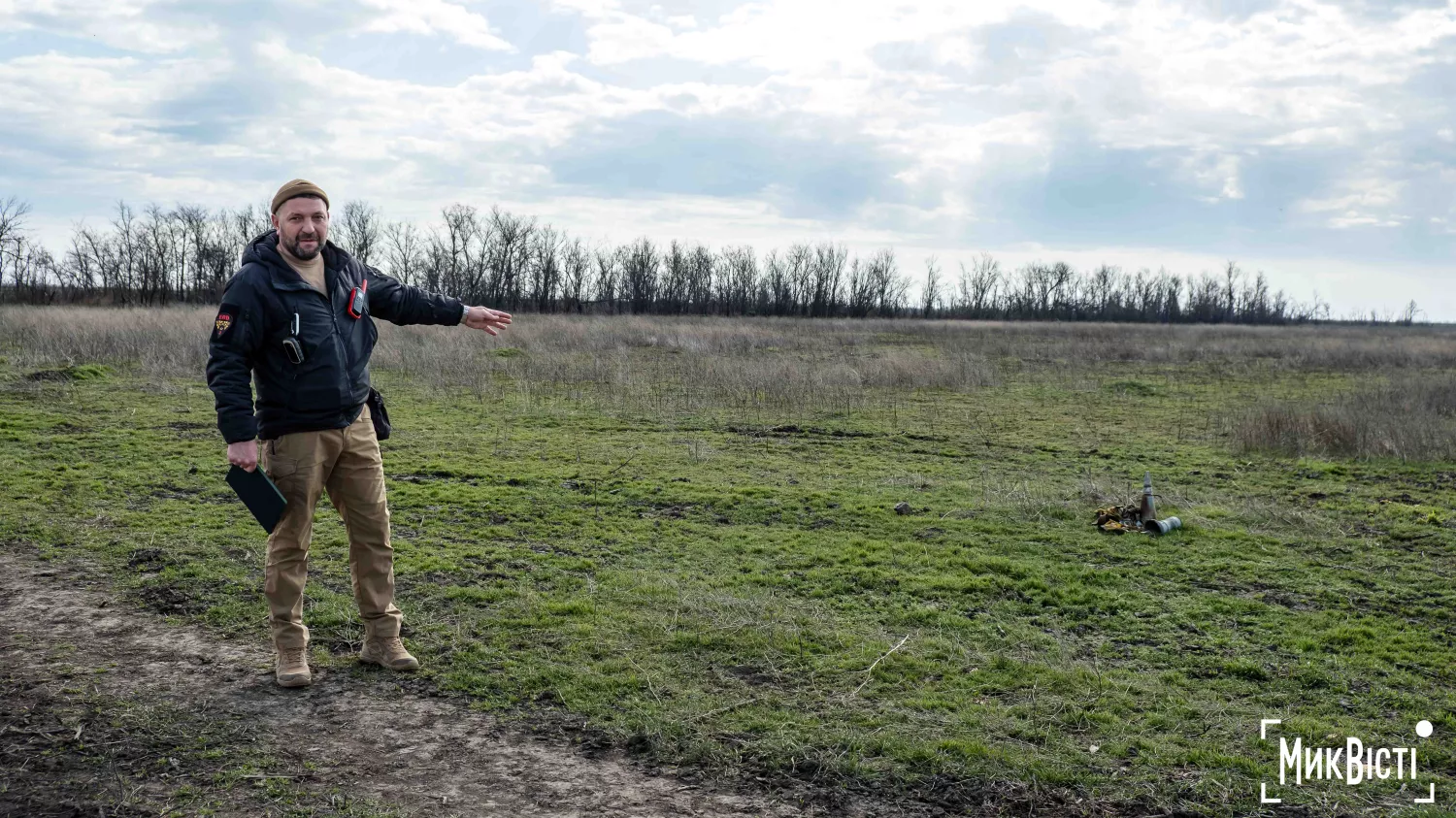 Evhenii Kantsev, commander of the survey team, shows where a dangerous object is located in the field. Photo: NikVesti
Evhenii Kantsev, commander of the survey team, shows where a dangerous object is located in the field. Photo: NikVestiThrough the eyes of a drone and from people's stories: how to find out where it's dangerous
Demining Solutions is a humanitarian demining company with extensive experience in war-affected regions of Ukraine. Since 6 March, their team has been conducting a non-technical inspection (NTI) in Ternovi Pody using modern data collection and analysis technologies.
«The situation here is complicated. We found the remains of cluster munitions and minefields left by the occupiers. The biggest problem is unknown minefields. That is why the NTO is a critical stage,» says the Demining Solutions representative.
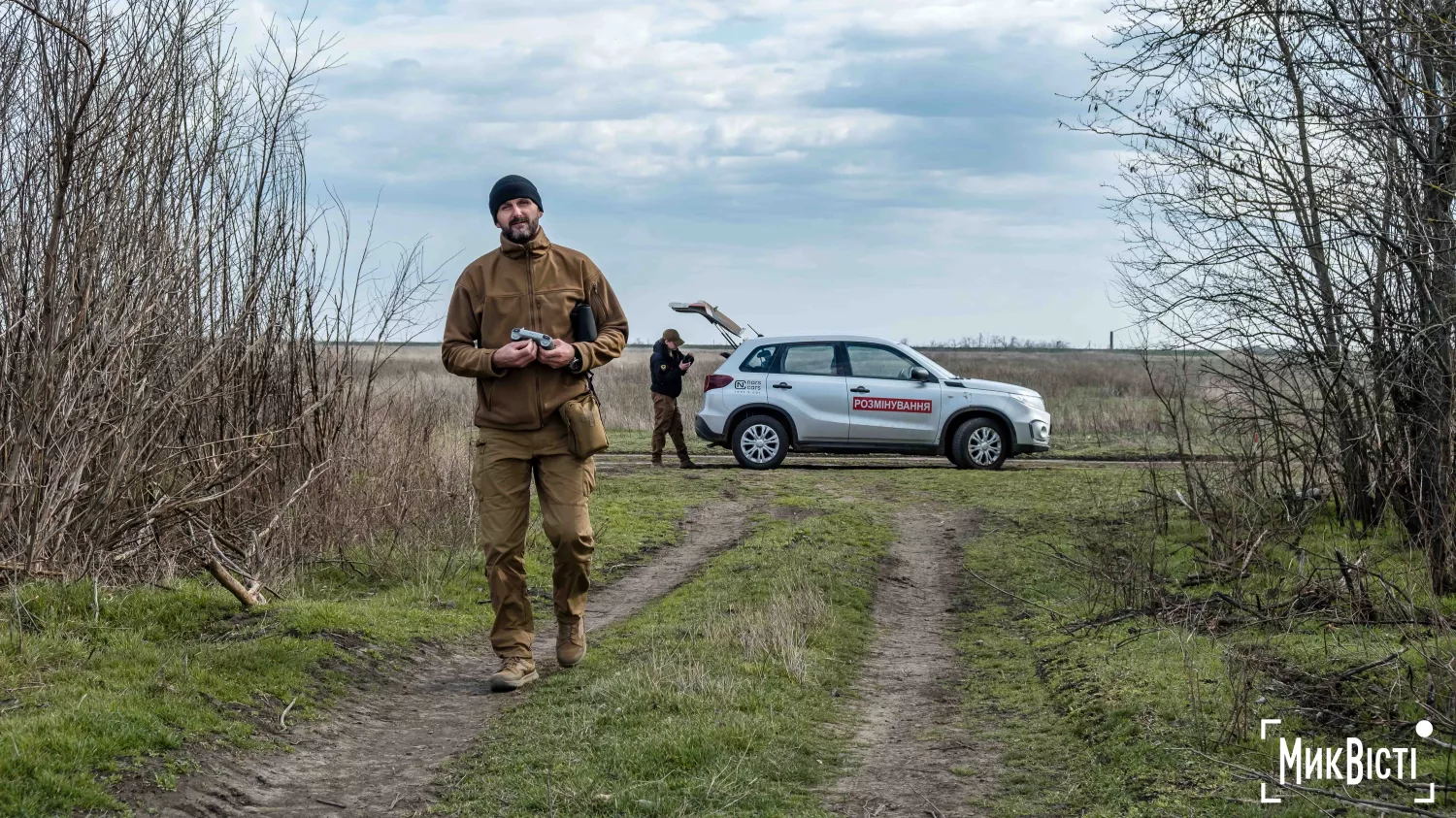 One of the specialists of the team that is examining the outskirts of the village of Ternovi Pody with various means. Photo: NikVesti
One of the specialists of the team that is examining the outskirts of the village of Ternovi Pody with various means. Photo: NikVesti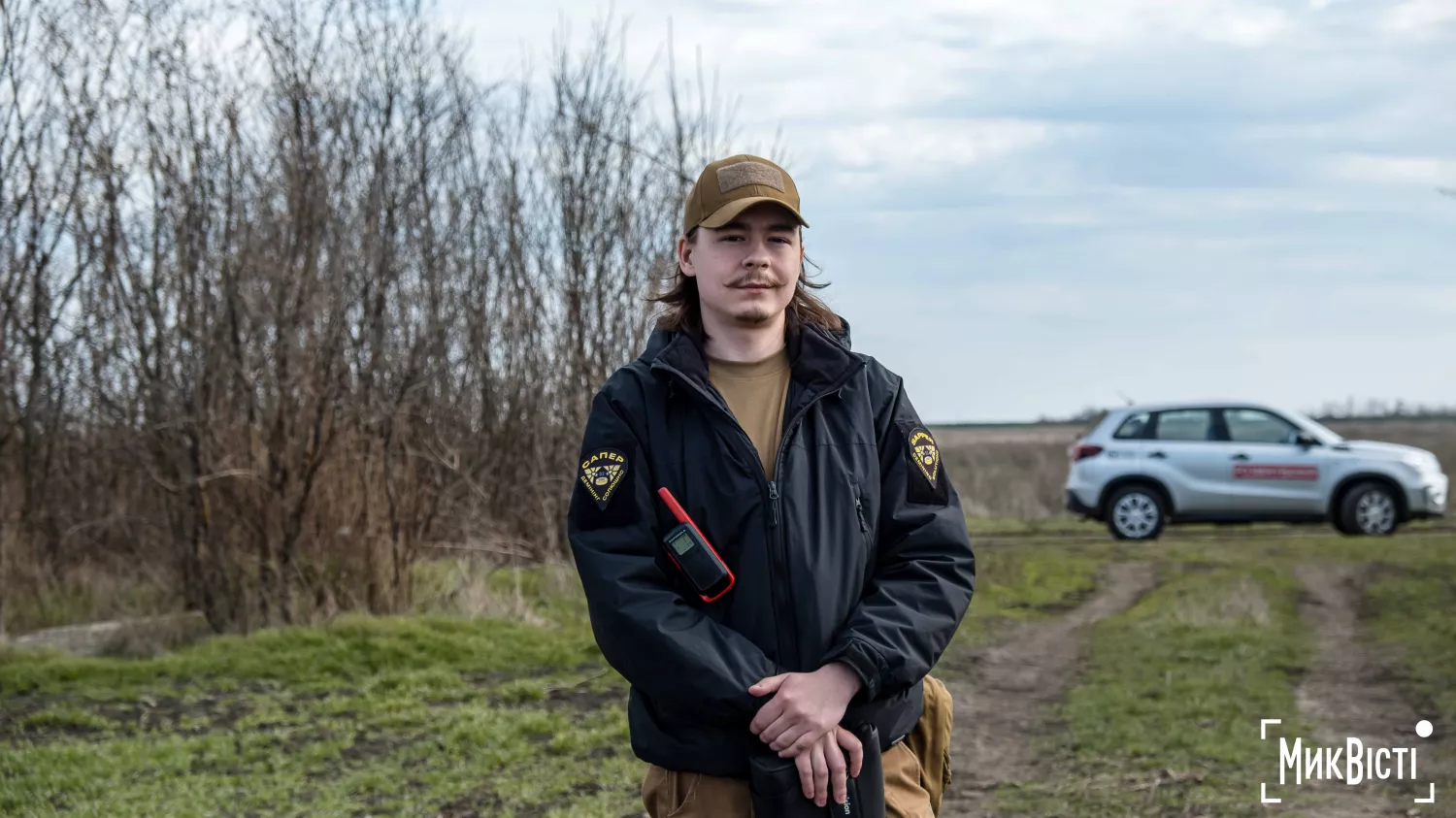 One of the specialists of the team, which is surveying the outskirts of the village of Ternovi Pody with various means. Photo: NikVesti
One of the specialists of the team, which is surveying the outskirts of the village of Ternovi Pody with various means. Photo: NikVesti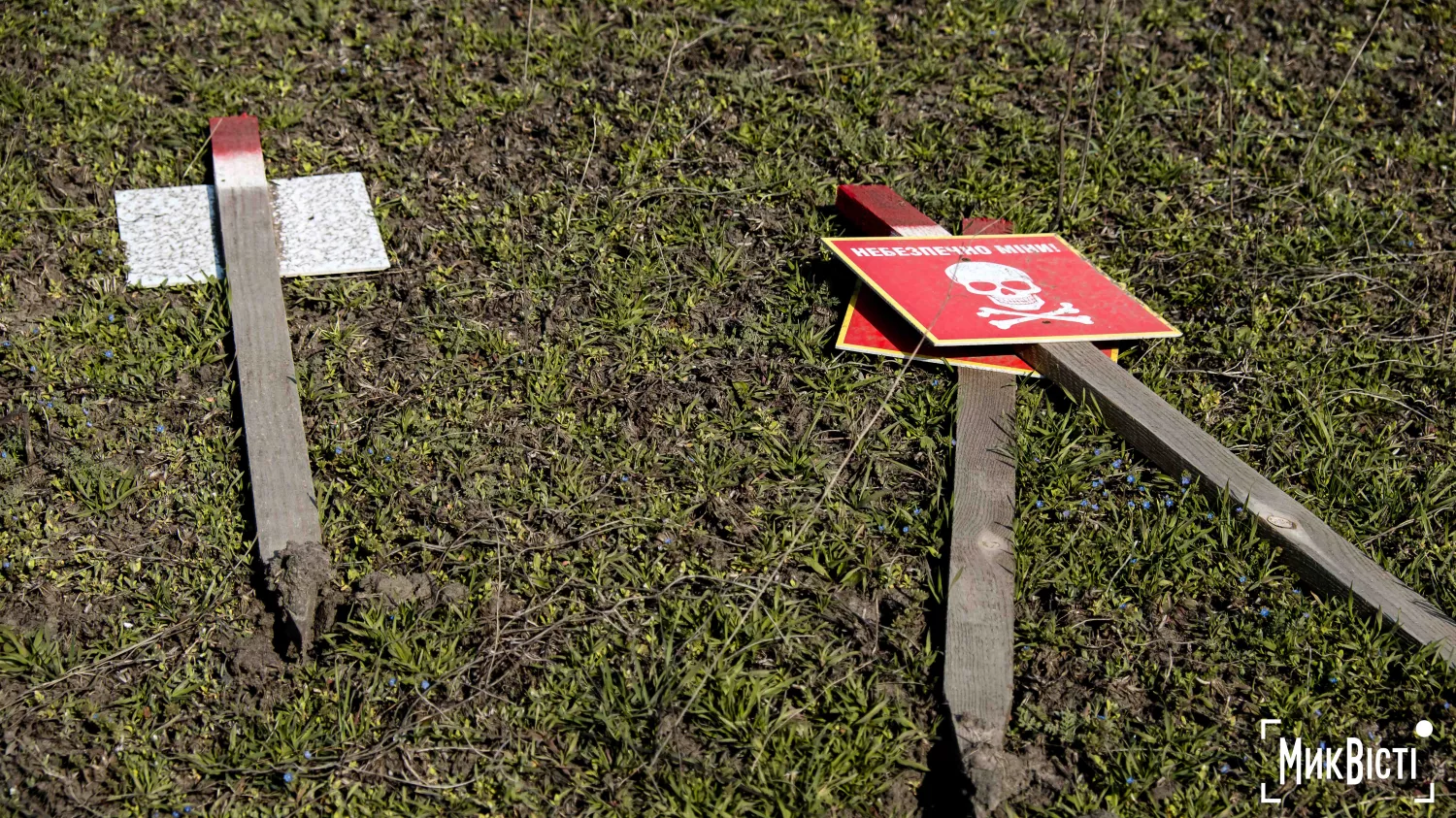 Signs with the inscription «Beware of mines» are installed by specialists in special places and exclusively according to the safety procedure. Photo: NikVesti
Signs with the inscription «Beware of mines» are installed by specialists in special places and exclusively according to the safety procedure. Photo: NikVestiThe commander of the survey team, Yevhenii Kantsev, explains that their team works not only on request, but also with critical infrastructure such as irrigation canals, factories, and water pipes.
«We carry out a full cycle of work: we detect mines, clear them and defuse them. We currently operate as an NTI group, but if necessary, the head office can reformat us into a demining group. Some of our specialists also specialise in defusing explosive devices,» explains Yevhenii Kantsev.
His team is currently examining the areas where the Norwegian organisation NPA carried out demining several years ago. The goal is to check the condition of the area and collect up-to-date data.
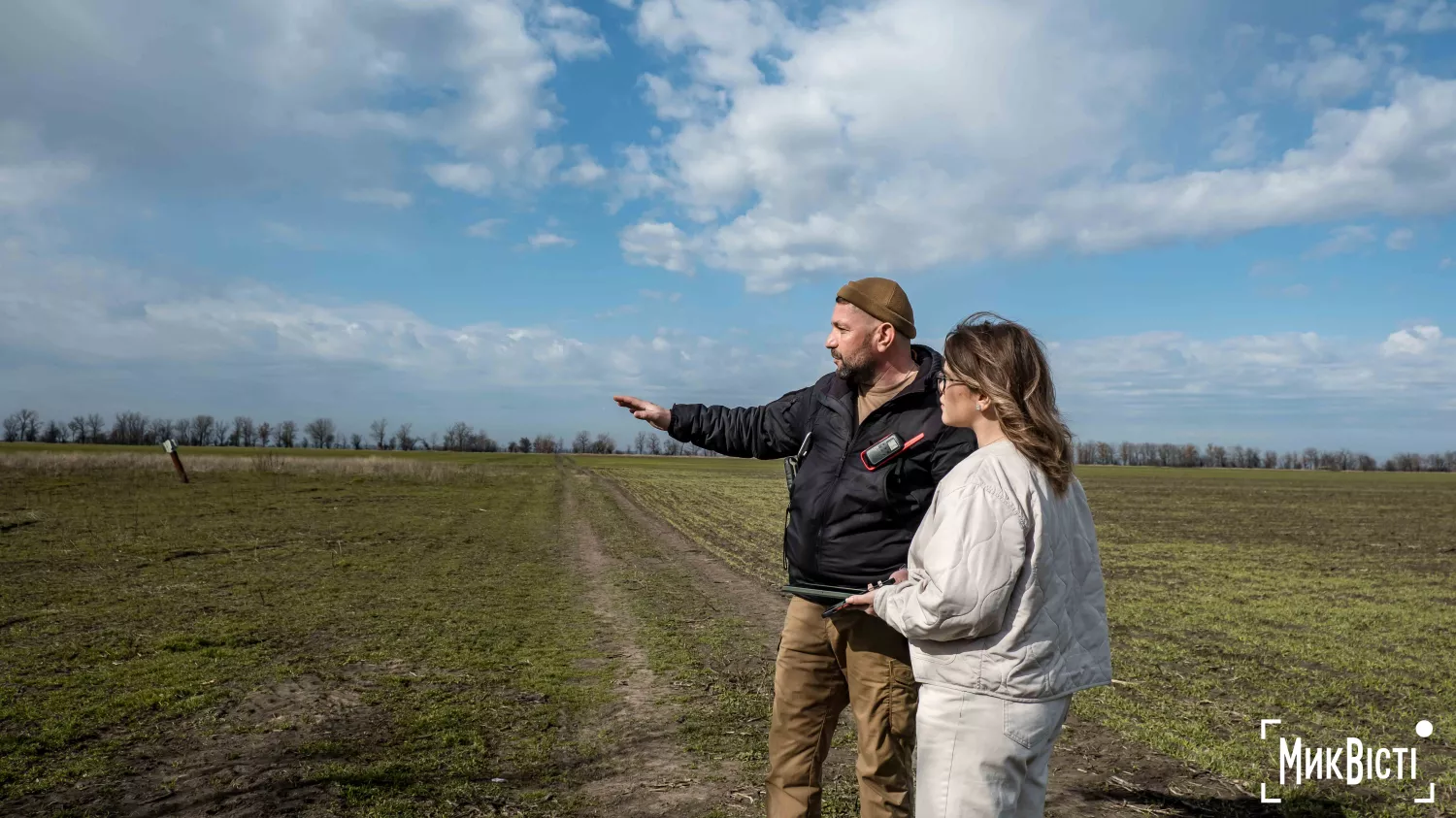 The commander of the survey team, Yevhenii Kantsev, explains that the NPA team has no right to enter the fields, but can only use drones or other means to record dangerous objects. Photo: NikVesti
The commander of the survey team, Yevhenii Kantsev, explains that the NPA team has no right to enter the fields, but can only use drones or other means to record dangerous objects. Photo: NikVestiThe first stage of the survey is to interview local residents, especially farmers and witnesses to the fighting.
«Information from locals is the best source for understanding the situation on the ground. If someone stayed here during the occupation, their testimony can be key to understanding the location of minefields or ammunition remnants,» says team leader Yevhenii Kantsev.
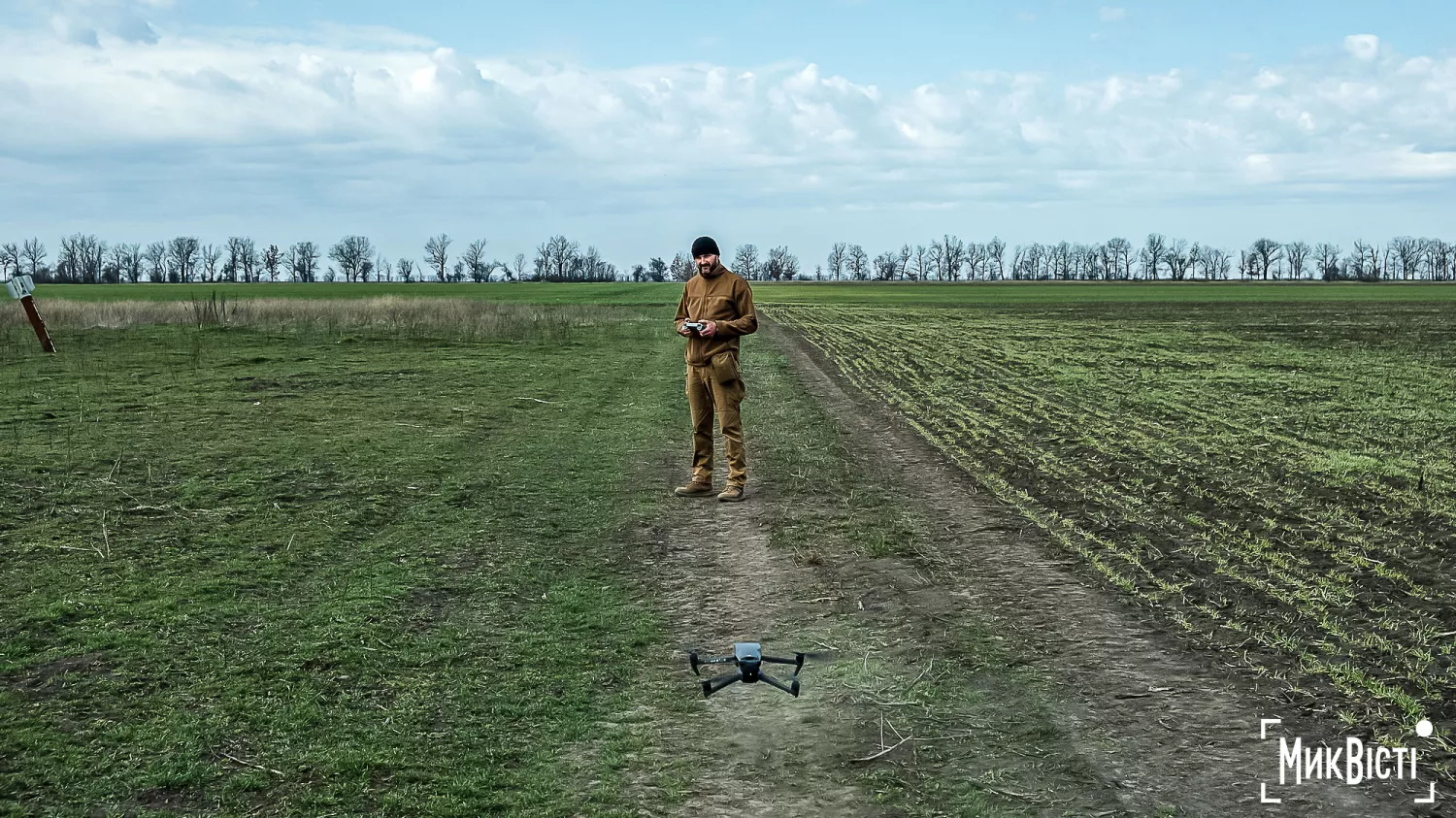 One of the team members of the NTO team lifts a drone to search for dangerous objects in the fields. Photo: NikVesti
One of the team members of the NTO team lifts a drone to search for dangerous objects in the fields. Photo: NikVestiAfter collecting the information, the specialists proceed to a visual inspection of the area. NTI groups consist of three to four people, while demining groups consist of ten or more. Deminers use binoculars, navigators, compasses and drones. The latter allow them to assess the extent of contamination without risking people.
«For example, there is a field that is marked as contaminated in the database, but the farmer works there. We arrive and interview him, and it turns out that he collected the metal fragments on his own and took them to the planting. And in the neighbouring field, we found 91 hazardous objects,» says Yevhenii Kantsev.
We mark the hazardous objects on a map and pass them on to international organisations and the State Emergency Service.
Have you found something suspicious? Tips that can save lives
When to call the sappers: how decisions are made on the spot
If mines or cluster munitions are found, the method «is used: one sapper, one pass». If the remnants of the shells do not pose an explosive threat, other approaches are used.
«We decide whether to involve a demining team and at what depth to search for explosives. This allows us to use human resources efficiently,» says Yevhenii Kantsev.
Sometimes, the NTI groups help to remove territories from the register of mined areas if farmers or local residents remove the fragments of equipment or ammunition themselves.
In Ternovi Pody, Russians actively used mortar shells and other ammunition.
«In 2023, several cows were killed by mines left by the occupiers. There were also cases of sappers being blown up. Two years ago, a sapper from the State Emergency Service lost his leg when he hit a mine while working in the field,» says Yevhenii Kantsev.
According to him, the Russians violated the Geneva Convention by using prohibited mines and booby traps, which create additional risks for civilians and deminers.
«The threat is not only from mines, but also from scattered fuses that can go off at any time,» emphasises Yevhenii Kantsev.
Therefore, interaction with local residents, modern technology and professional training of sappers are key factors in the success of de-mining Ternovi Pody.
When the world helps: how support speeds up the return to life
The United Nations Development Programme (UNDP) actively supports humanitarian demining in Ukraine, as it directly affects the safety of the population and the ability to restore the affected areas.
According to UNDP Mine Action Specialist Oleksandr Liubarov, in January-February 2025 alone, two NTI groups checked nearly one hundred addresses. Suspicious items were found at four of them that require additional analysis and clearance. The rest of the areas are being prepared for restoration.
Currently, three teams are working in the Shevchenkove, Horokhivka, Halytsynove, Pervomaisk and Snihurivka communities. Another group of specialists will join them in the near future.
«Non-technical inspections are an important stage of demining as they help ensure that the sites are free of explosive hazards. This work is carried out even before the start of dismantling or clearing the debris to protect the specialists and the local population,» says Oleksandr Liubarov.
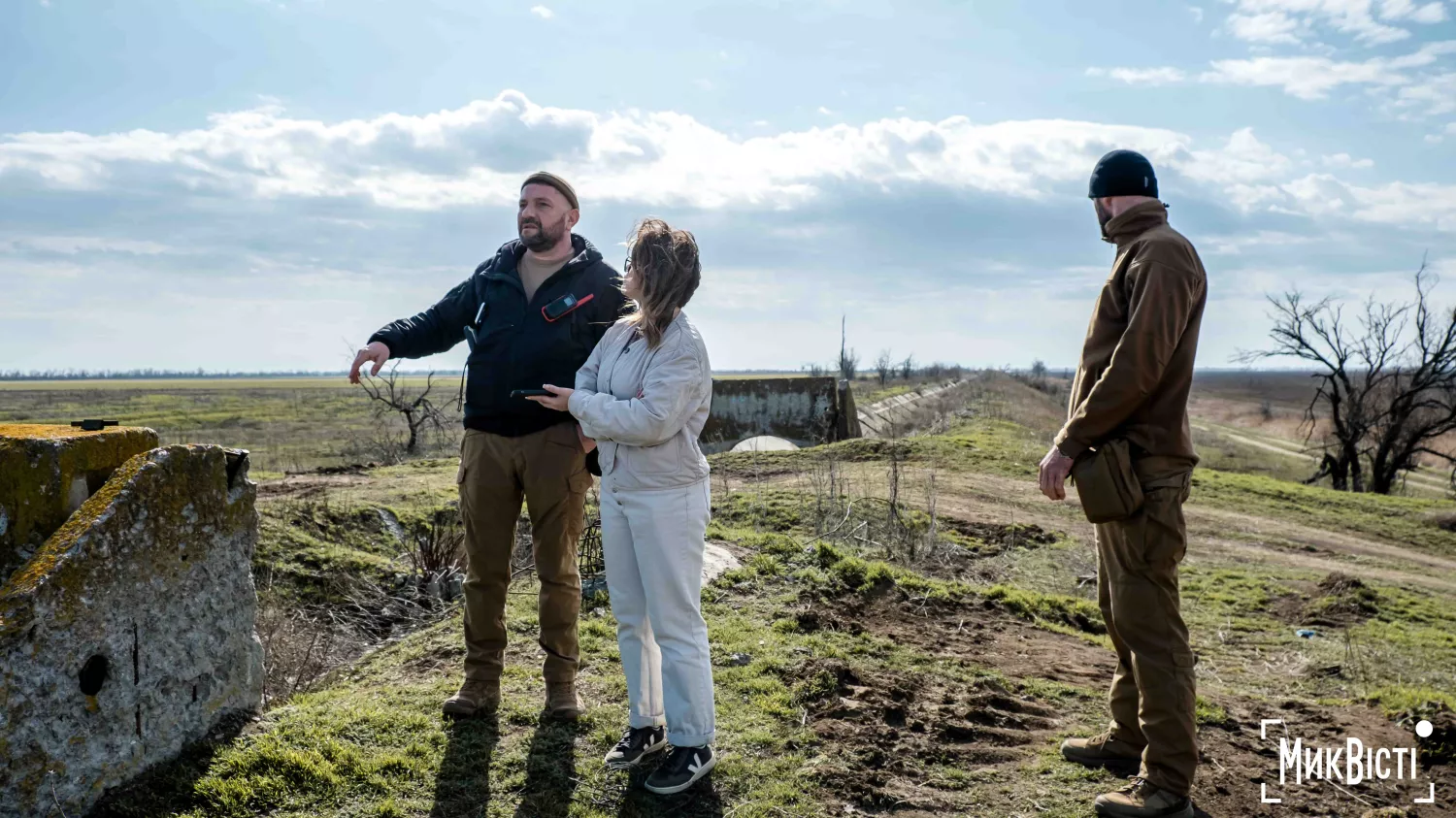 Yevhenii Kantsev says that his company's specialists also cleared some of the irrigation canals near Ternovi Pody. Photo: NikVesti
Yevhenii Kantsev says that his company's specialists also cleared some of the irrigation canals near Ternovi Pody. Photo: NikVestiMine clearance is not only dangerous but also extremely expensive. This work is funded by the UNDP, which allows Demining Solutions to conduct research and clean up.
«If it were not for international assistance, many fields would remain a deadly zone, as this is a very expensive process. We understand the importance of our work, as it affects the safety of people and the restoration of the territories. Thanks to international support, in particular from UNDP, we are able to carry out this work and train new specialists. Now we are at the stage of completing the survey, and after us, teams will come in to clear the areas for further use,» admits Yevhenii Kantsev.
It hurts to return: about the fears and dreams of the residents
However, problems with the return of people to the villages remain relevant. Many residents who left at the beginning of the war have not yet returned due to the destruction, lack of work and destroyed infrastructure.
«Almost half of the people have left the village. We want them to come back, but for this we need a proper infrastructure. We need to build a school, create jobs, restore roads and create conditions for a comfortable life,» Ivan says.
Ivan believes that the village will eventually recover and his business will continue to grow after the war ends. He is already working to rebuild the grain storage warehouses that were destroyed during the fighting.
Mine clearance is a long process. Even after the war is over, it will take years for Ukraine to clear the territories of explosive ordnance. However, thanks to modern technology and international support, this process is accelerating significantly.
Local residents hope that their land will soon be suitable for living and working again. In the meantime, they are waiting for the sappers because safety is paramount.
 A part of a Russian munition that looks like a trebuchet but is dangerous and can detonate. Photo: NikVesti
A part of a Russian munition that looks like a trebuchet but is dangerous and can detonate. Photo: NikVestiAlina Kvitko, NikVesti
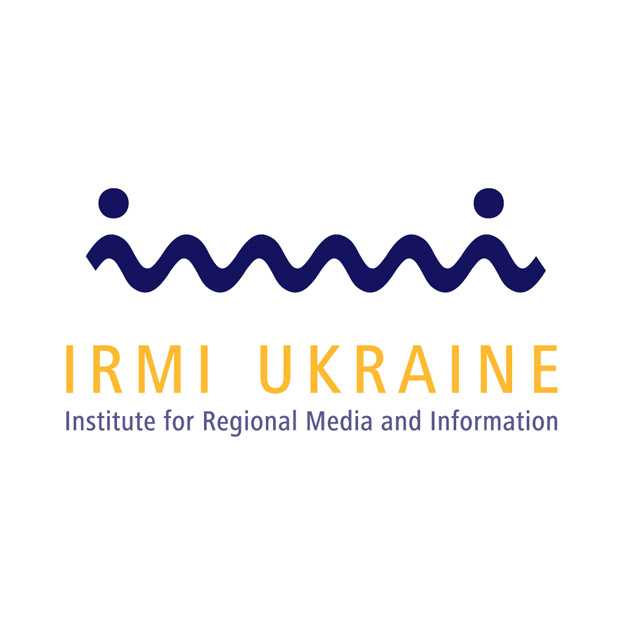
This material was produced as part of the "Improving Ukrainian Media Resilience" project, implemented by the Fondation Hirondelle (Switzerland) and IRMI, the Institute for Regional Media and Information (Ukraine). The project is funded by Swiss Solidarity.
